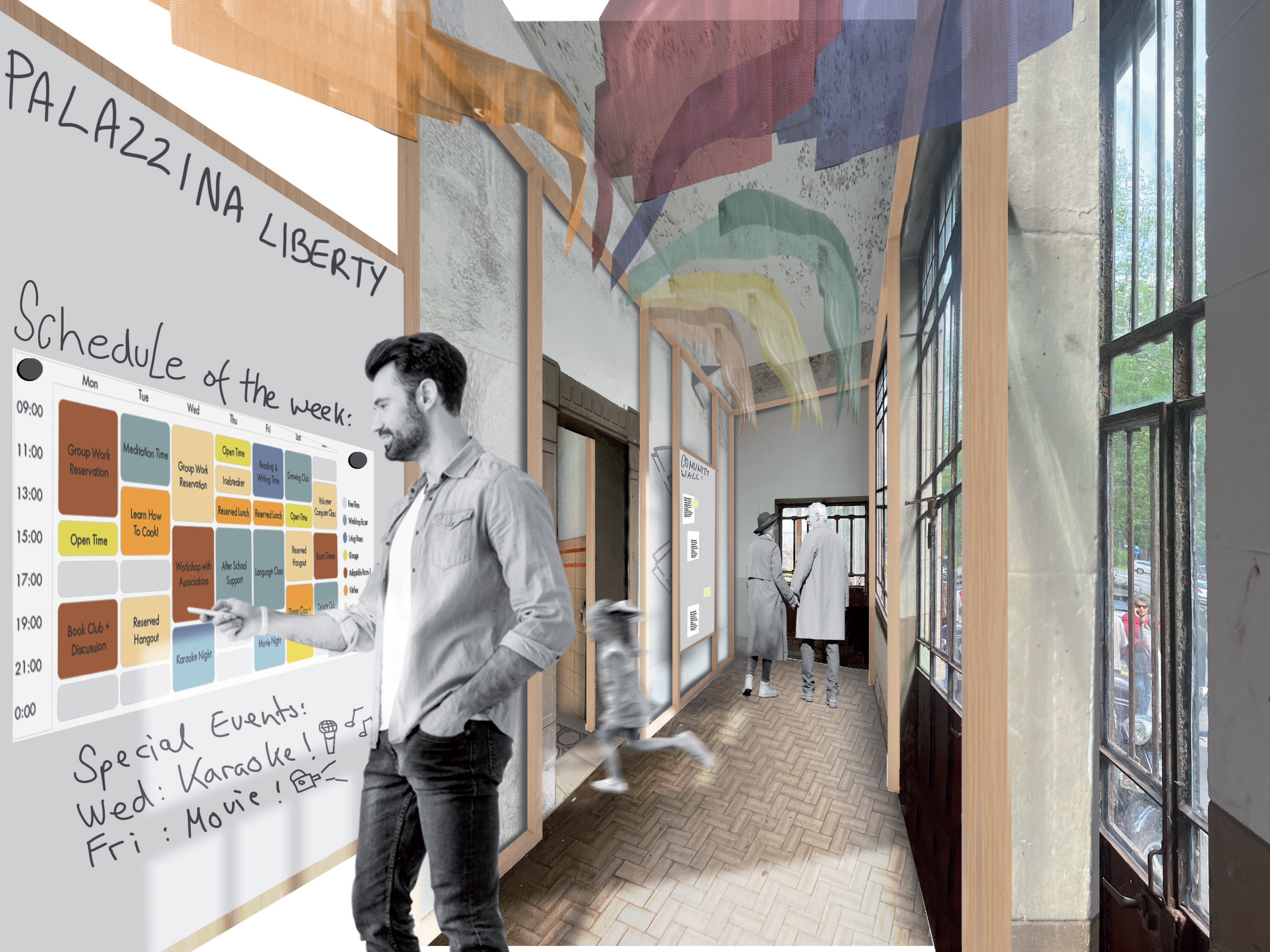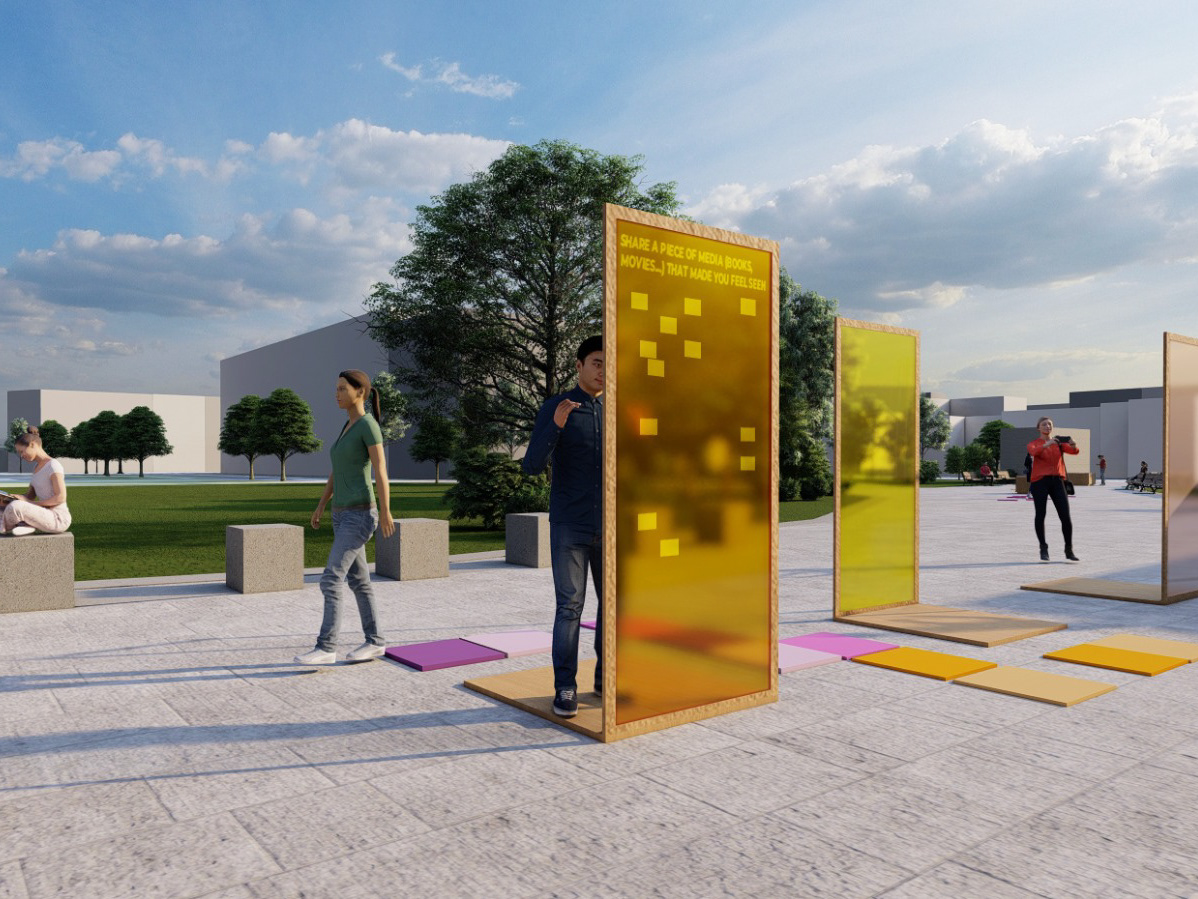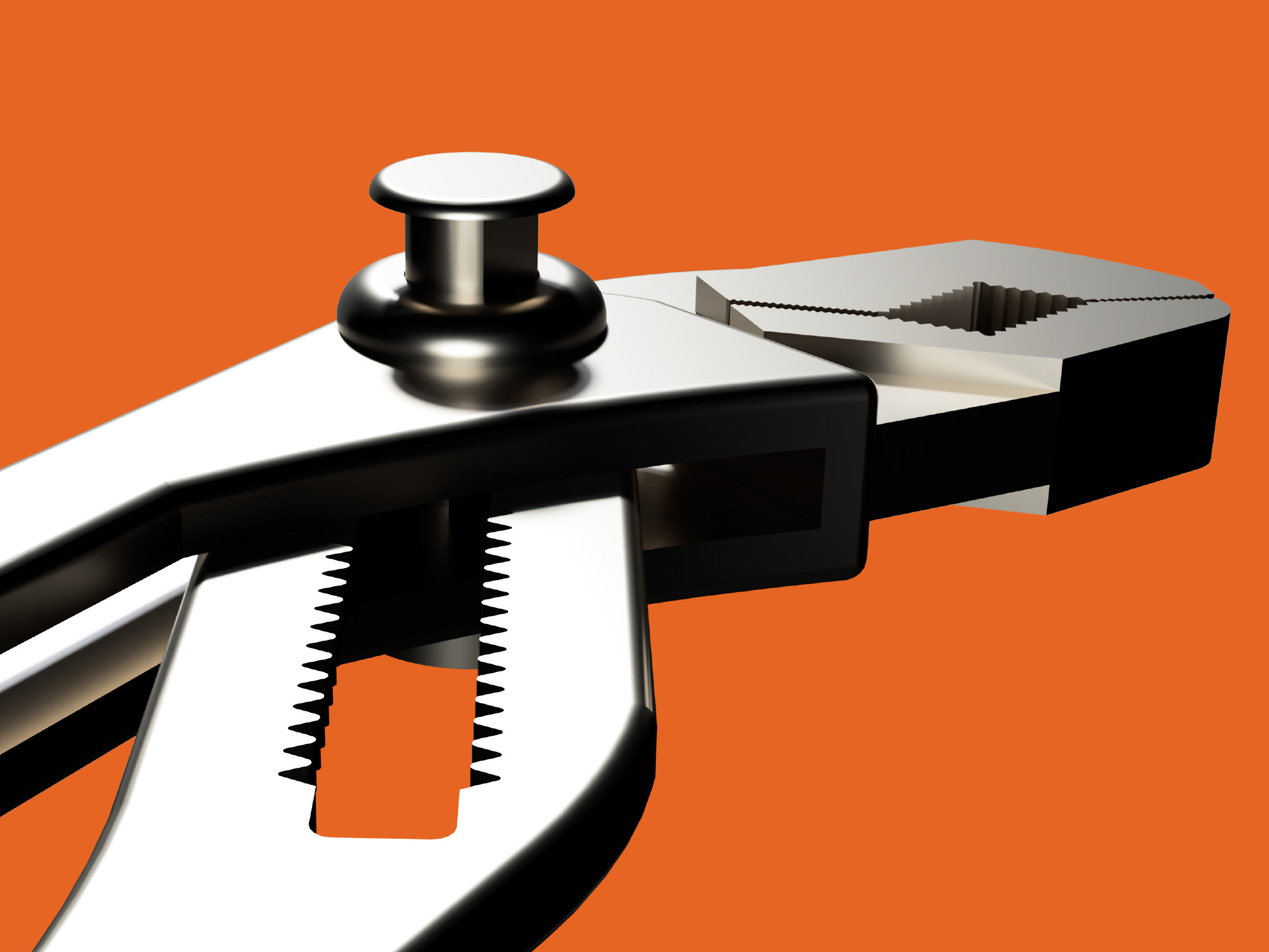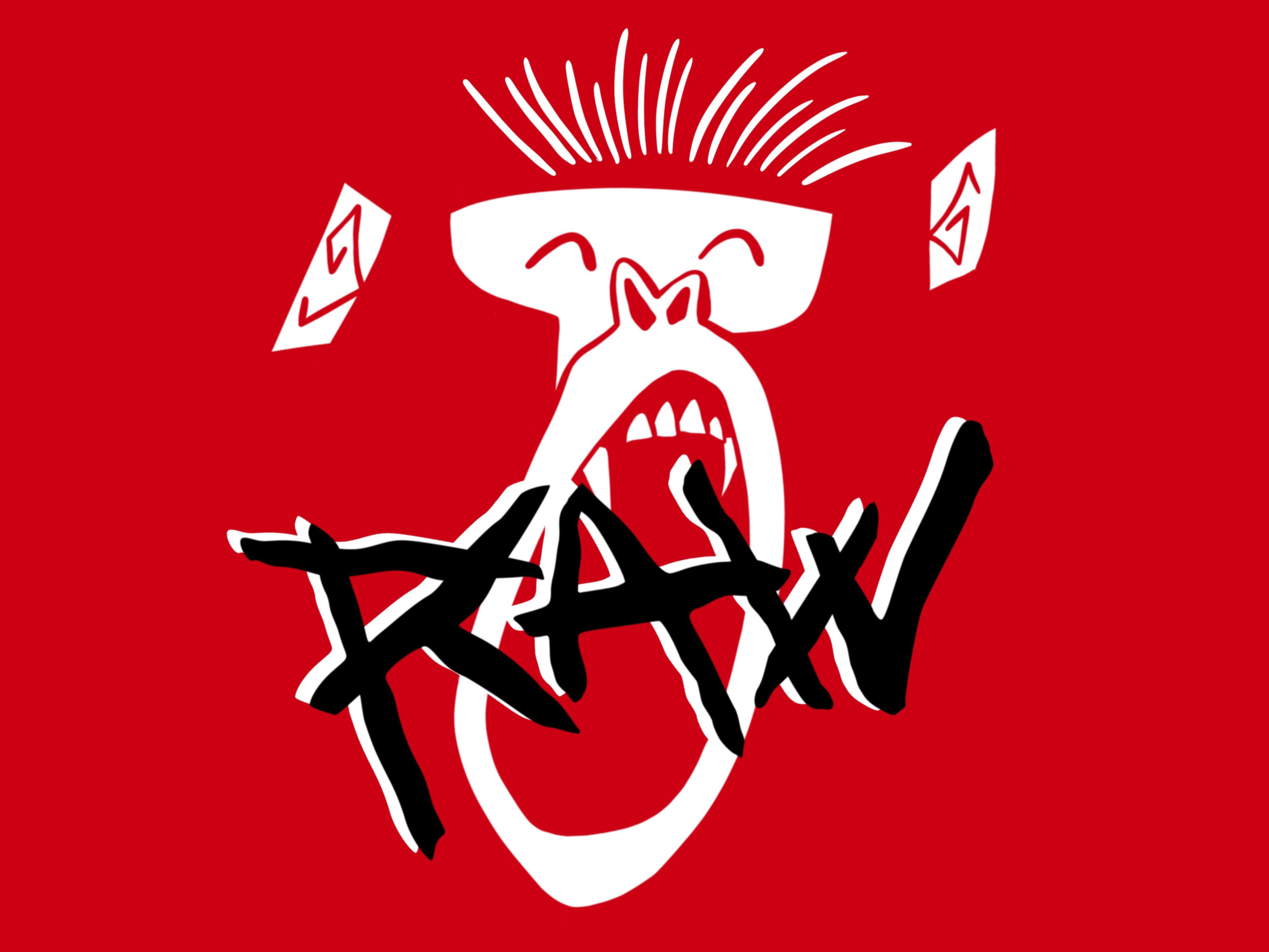The project arises from the University Museum of Navarra's intention to present Giacomo Puccini's opera of Tosca. With an absolute creative freedom as to the scenographic design of the opera, the project was developed through the concept of Italian Surrealism and Dadaism through the medium of collage because of how these artistic movements encapsulate the essence of the characters and happenings of the play.
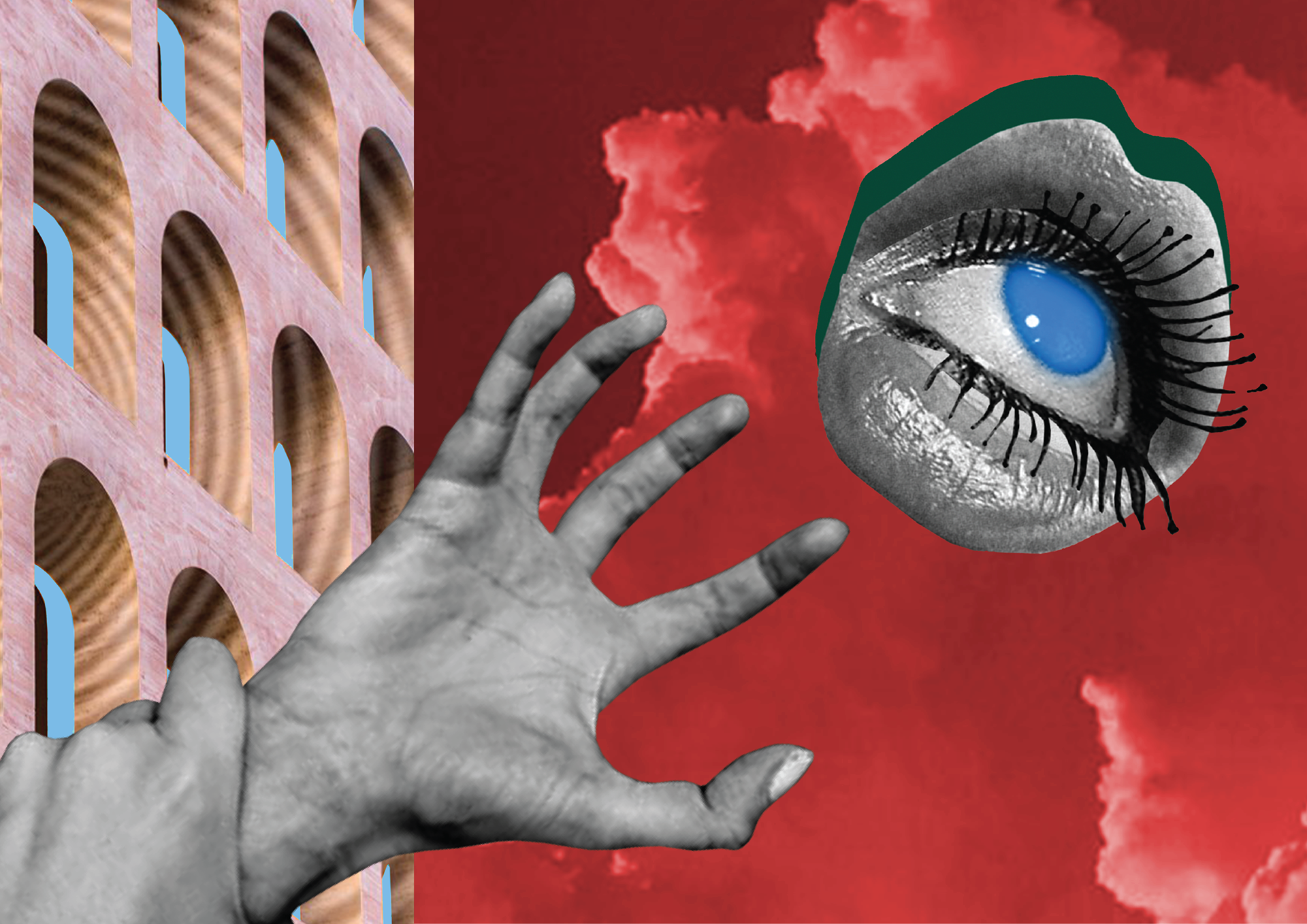
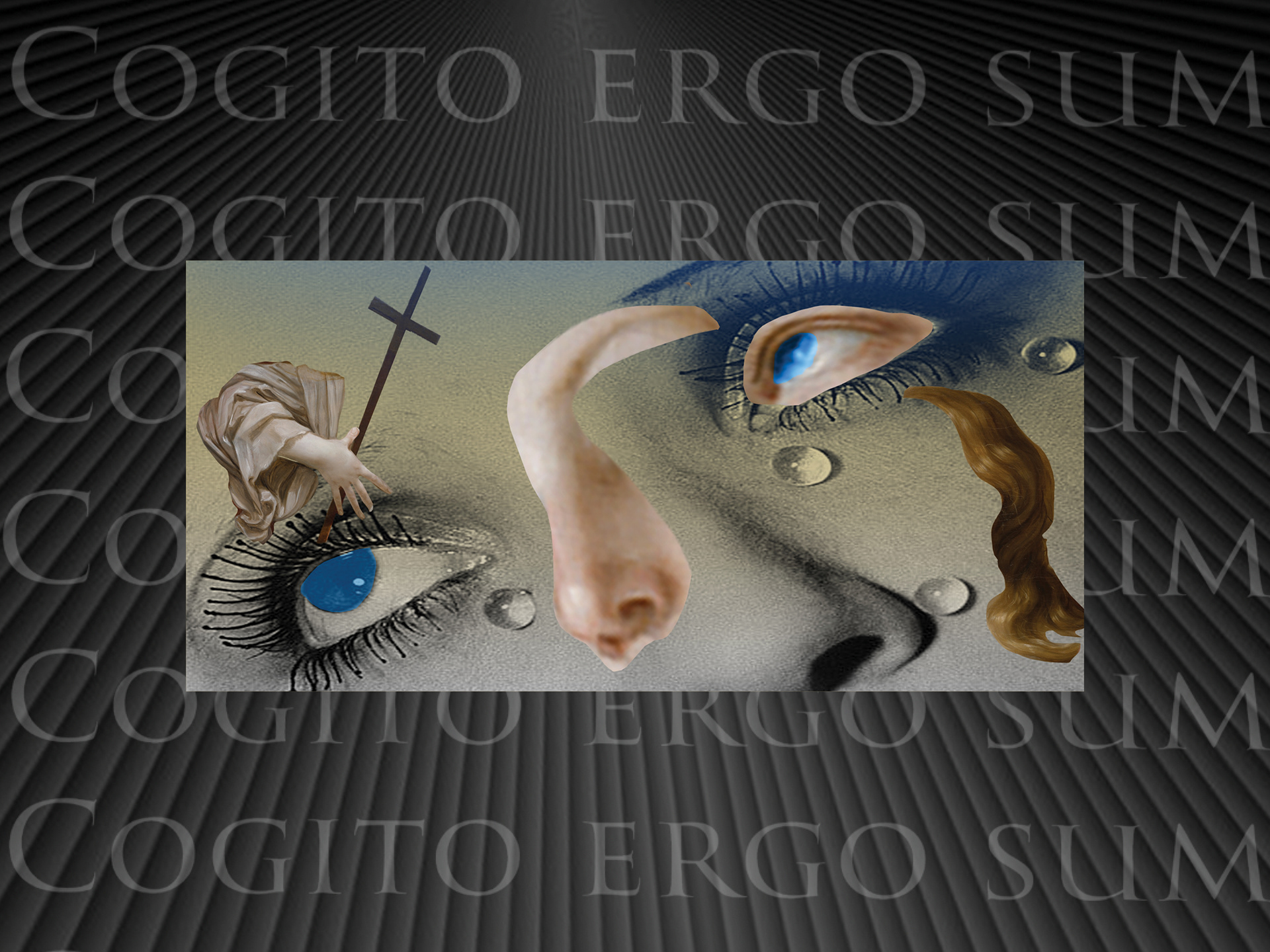
The deconstruction of referential works such as Alberto Giacometti's expressive sculptures, Giorgio de Chirico's structured paintings and Man Ray's evocative photography aided in the visual language used to capture the ambiance and the development of the emotional journeys of the characters.
Additionally, since the project was developed in a short time frame, and taking into account the dimensions and limitations of the venue stage, the opera was divided into three acts, with each act having two fully developed scenes with music, props, projections, lights, etc.
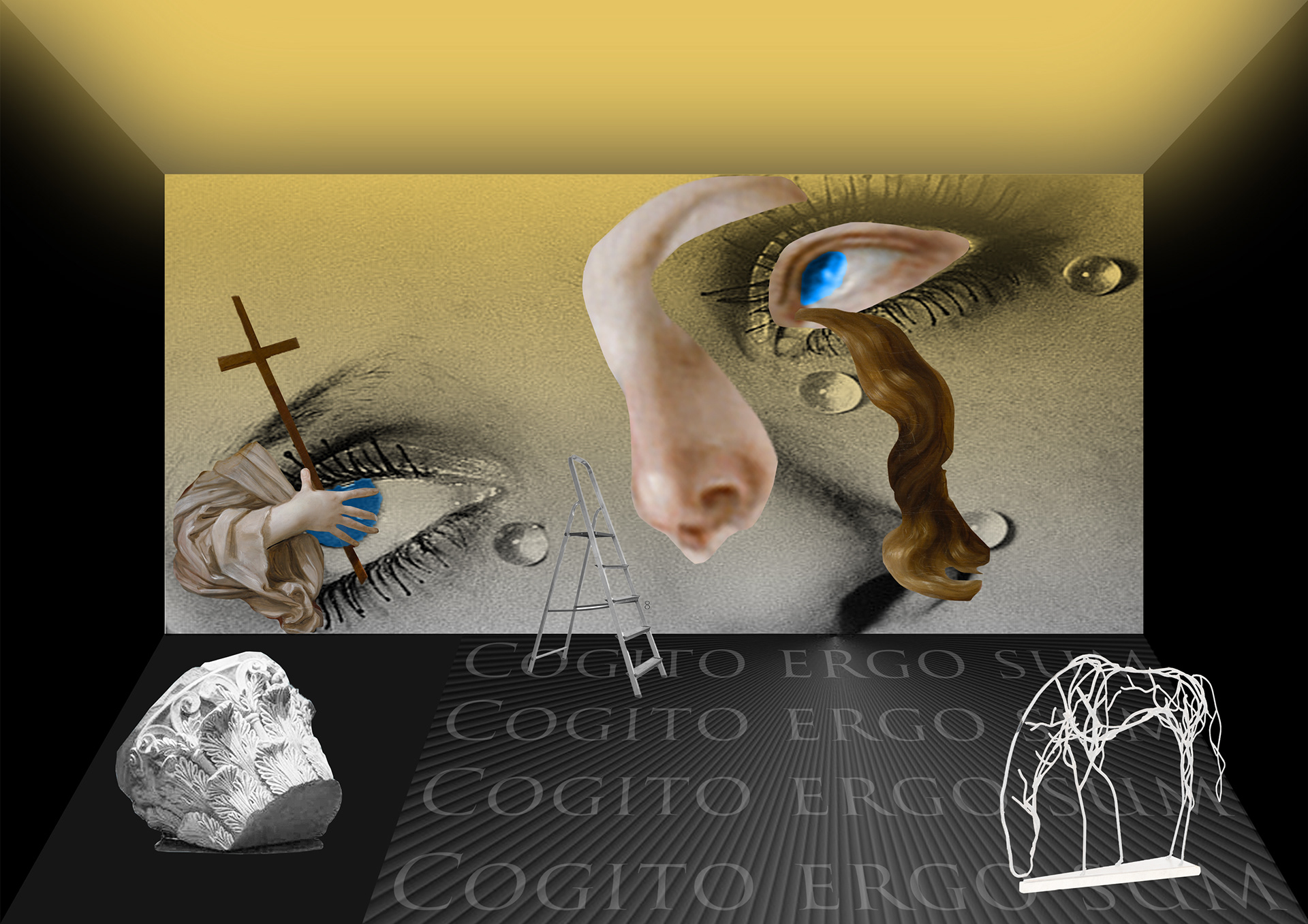
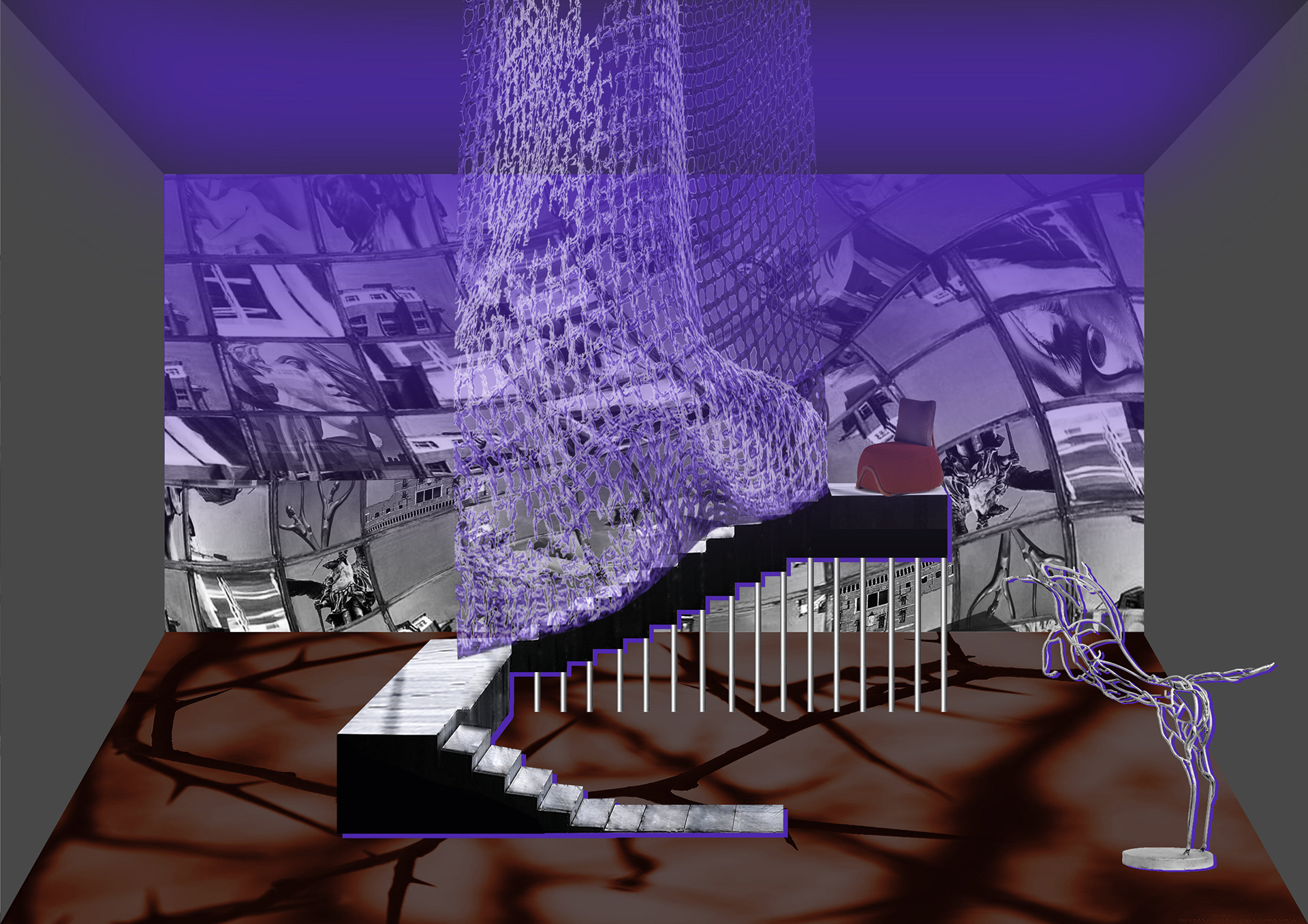
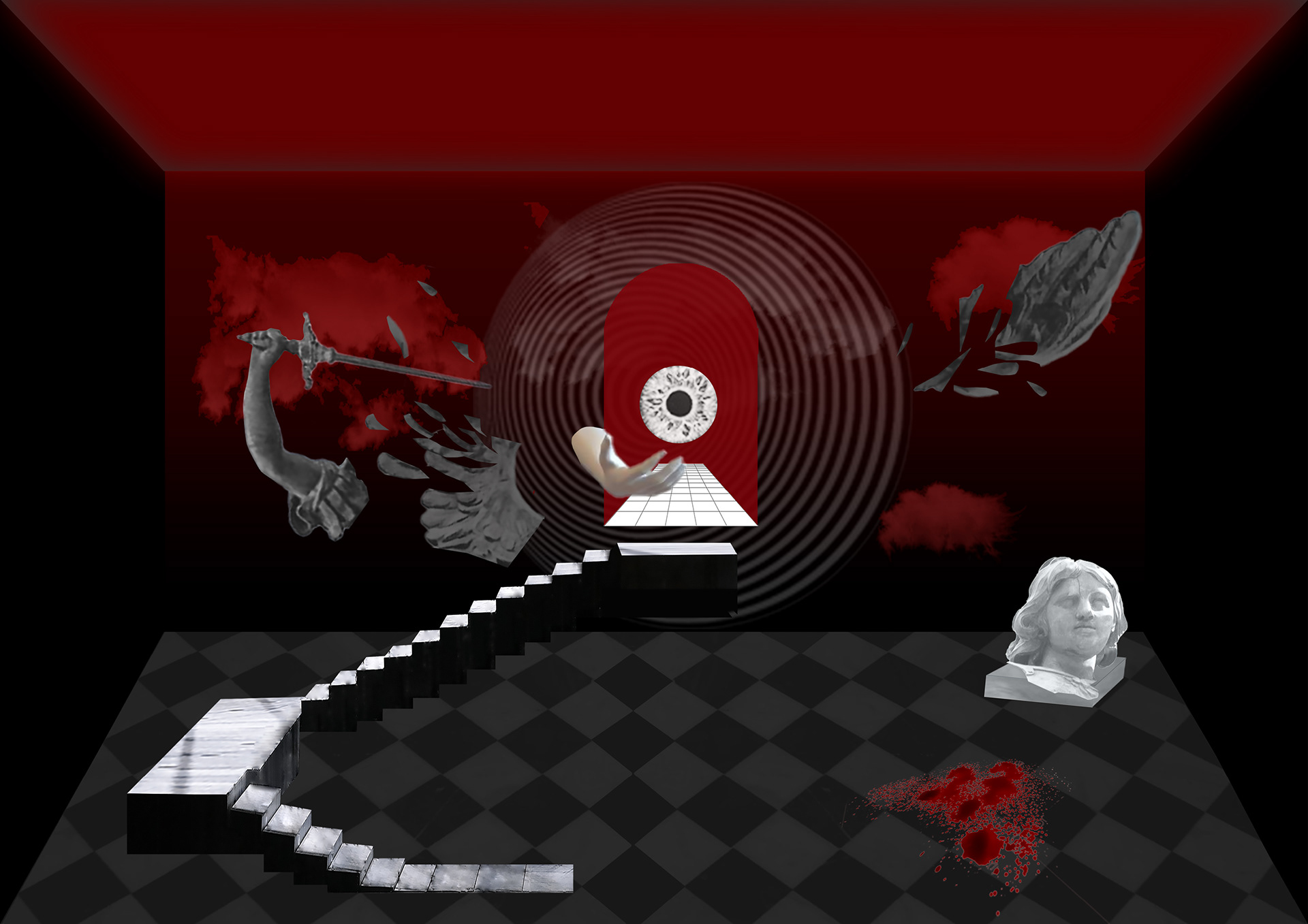
The opera takes place in Rome, and as such, the costuming design was heavily based on this idea of Italian decadence with surrealist elements. Thus the idea of taking inspiration from Versace runway looks from the 90s arose. Each of the characters has colors associated with them and their inner turmoils and personality aspects, and the material choices and silhouettes.
ACT 1 SCENE 1
Throughout the project, the use of deictic objects (elements that hold symbolisms, connotations or double metaphorical meanings) is highly present throughout the prop design. In the first scene, the eyes change color in reference to Tosca's vanity and egocentrism, whereas the horse acts as foreshadowing to Napoleon's victory in its posture change from Act 1 to Act 2. The lighting is a warm yellow, it is meant to be inviting, as the turmoil in the opera has not begun yet, lulling the viewer into a false sense of security.
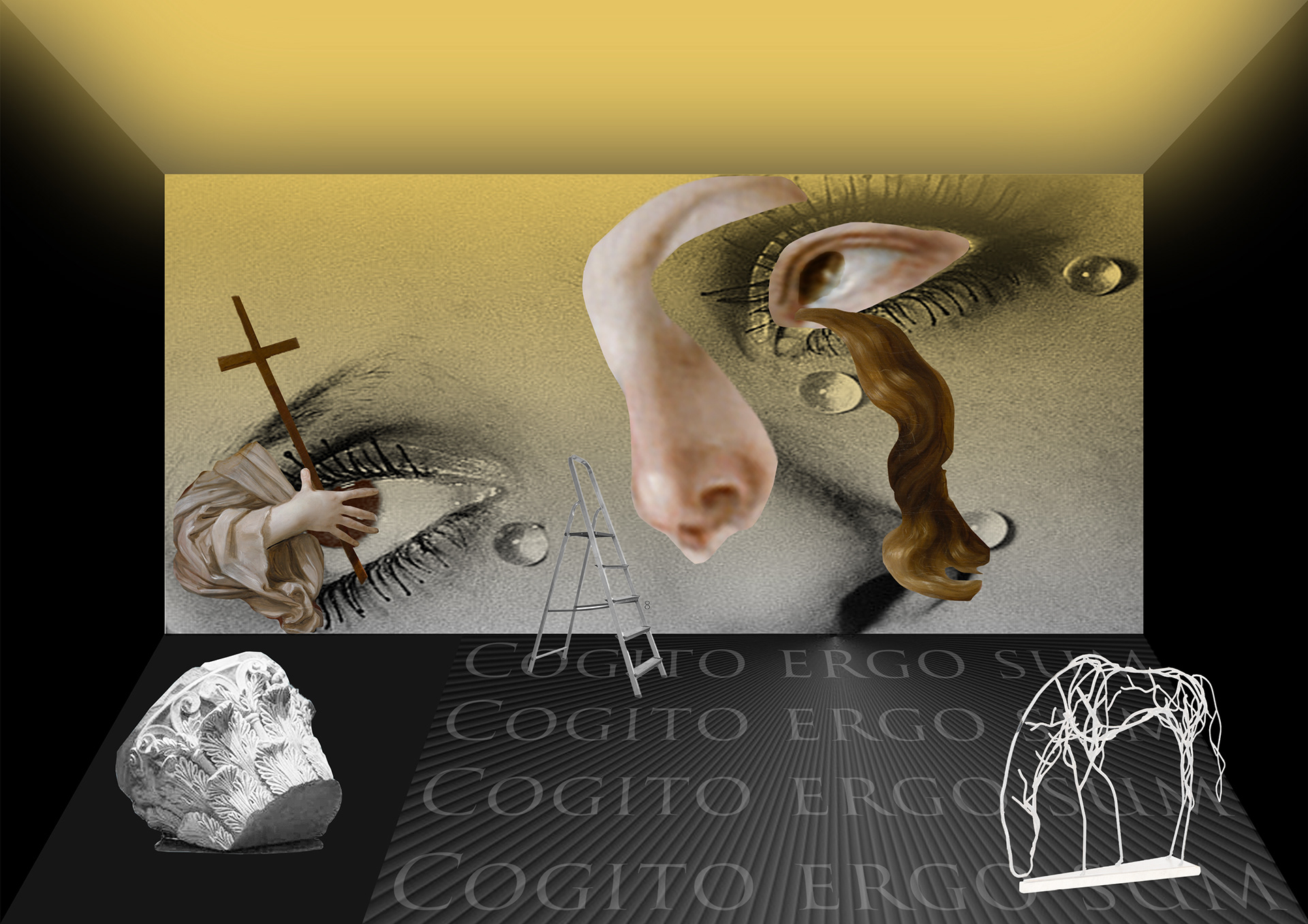
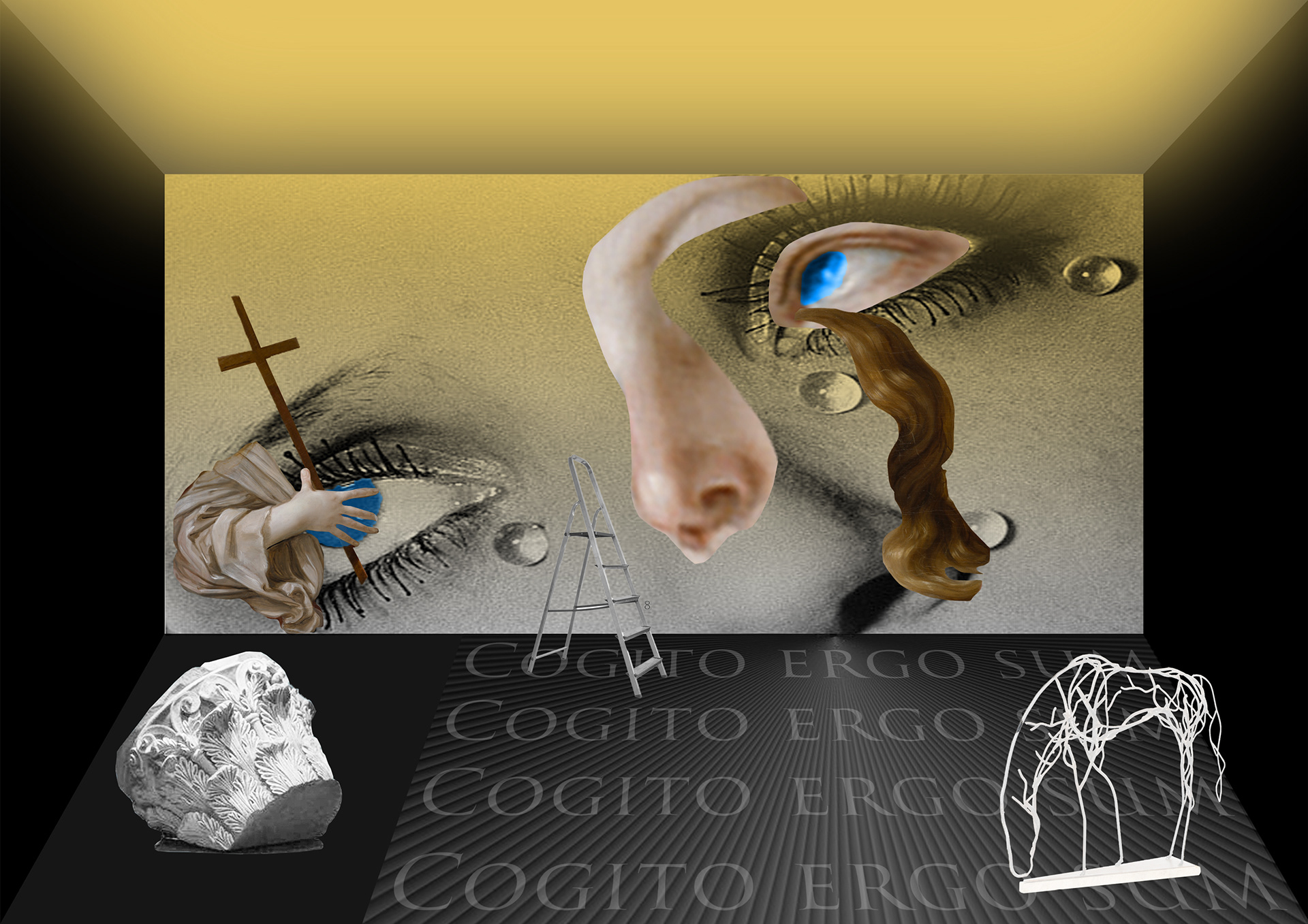

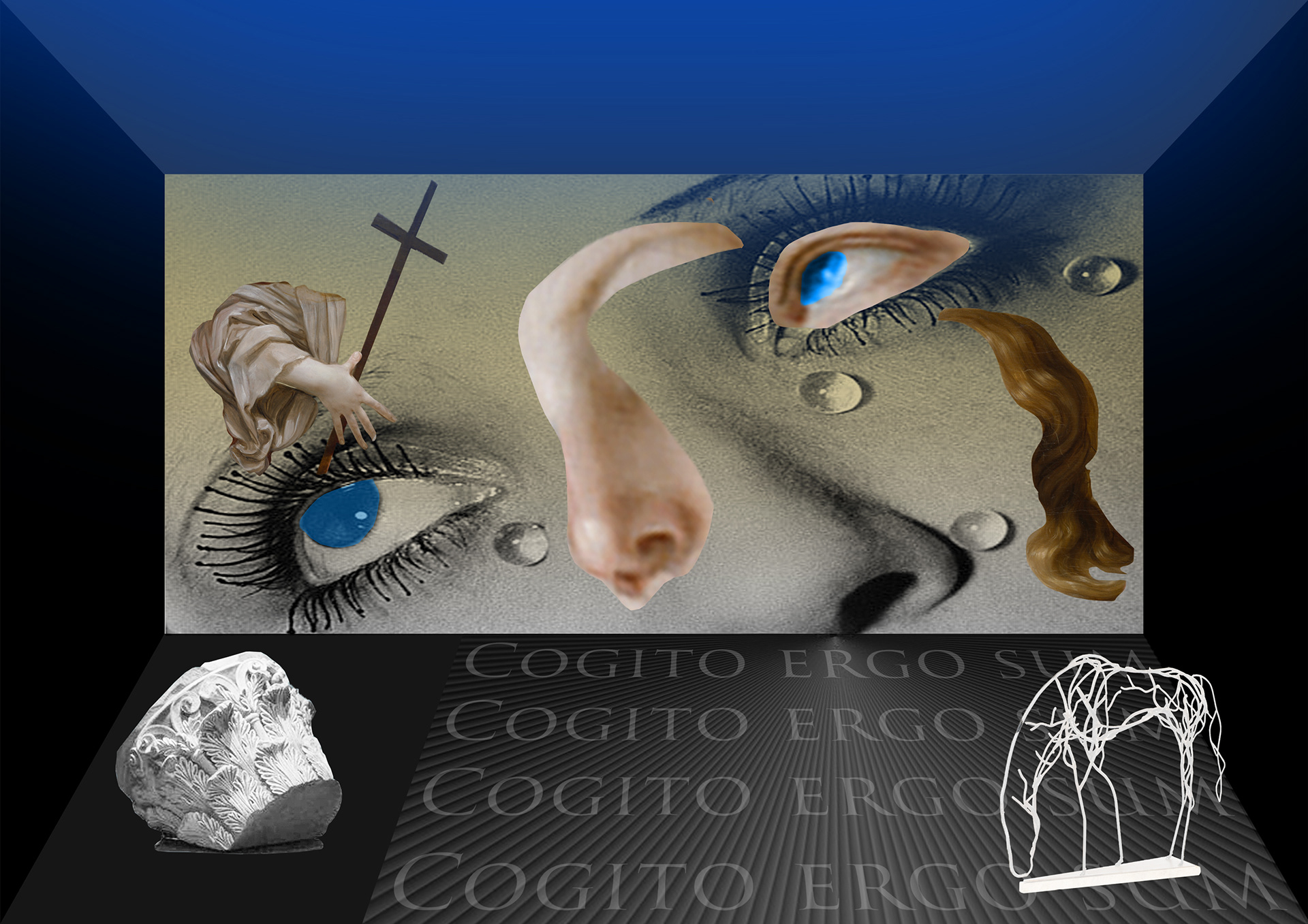
ACT 1 SCENE 2
Similarly, the transition between the two scenes in the first act happens in a gradual way, where a darkening of the background brings a warning with it as the plot thickens. In the same vein, the background projections move in jarring ways, as the church scenery becomes more and more unrecognisable. The light is maintained until the last minute, where the changing blue of the eyes takes over the scene, creating a smooth transition onto the next act.
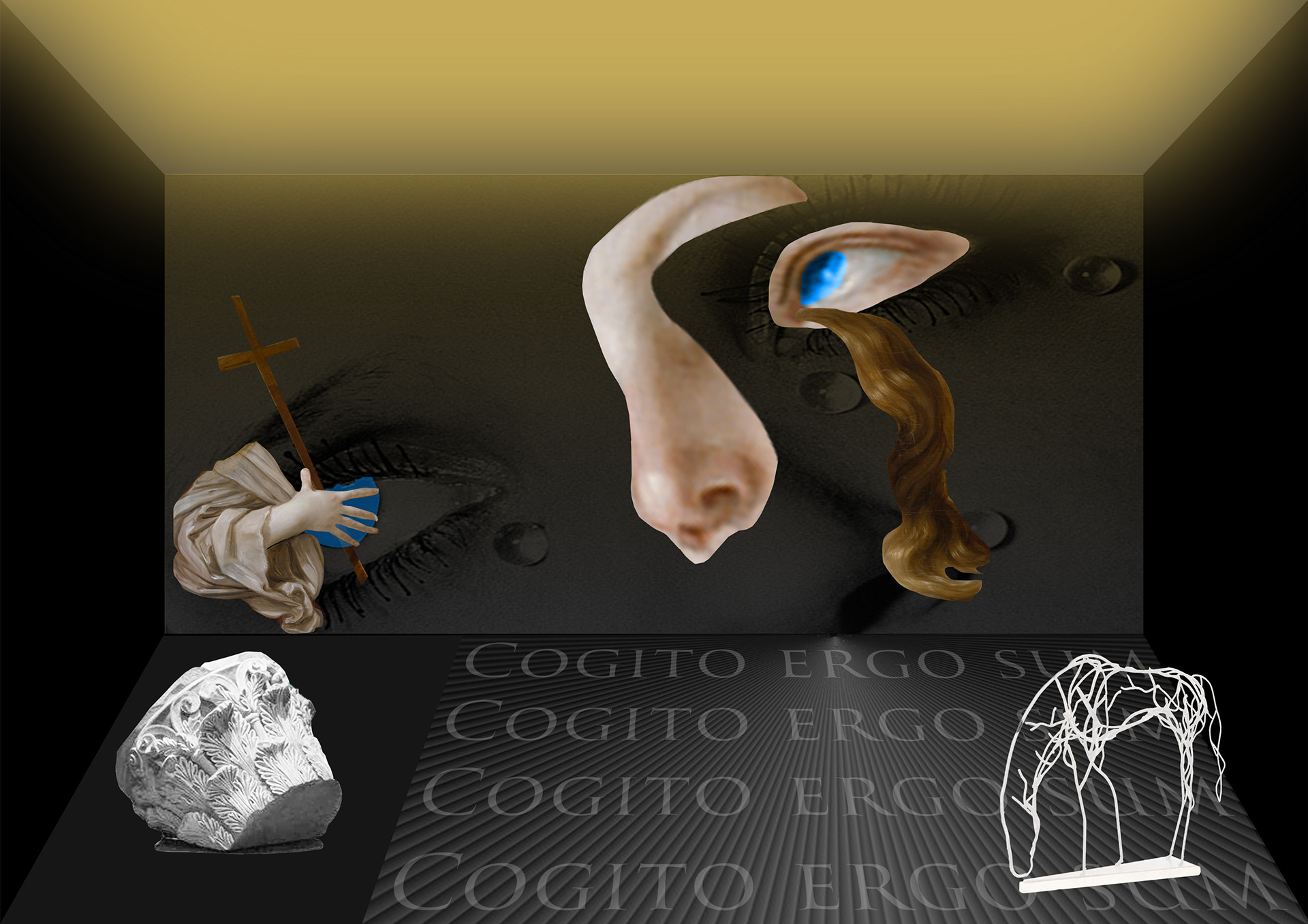
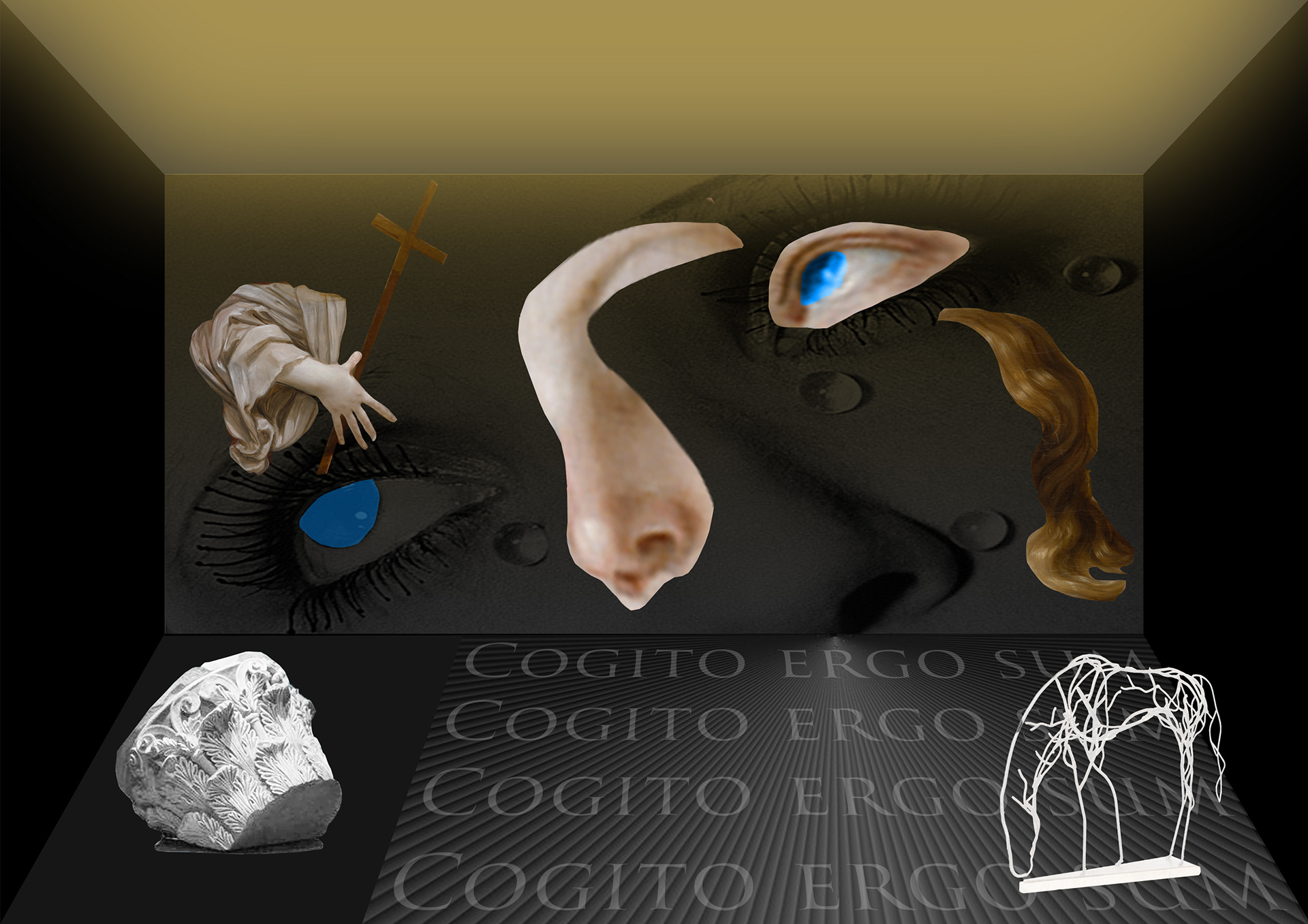
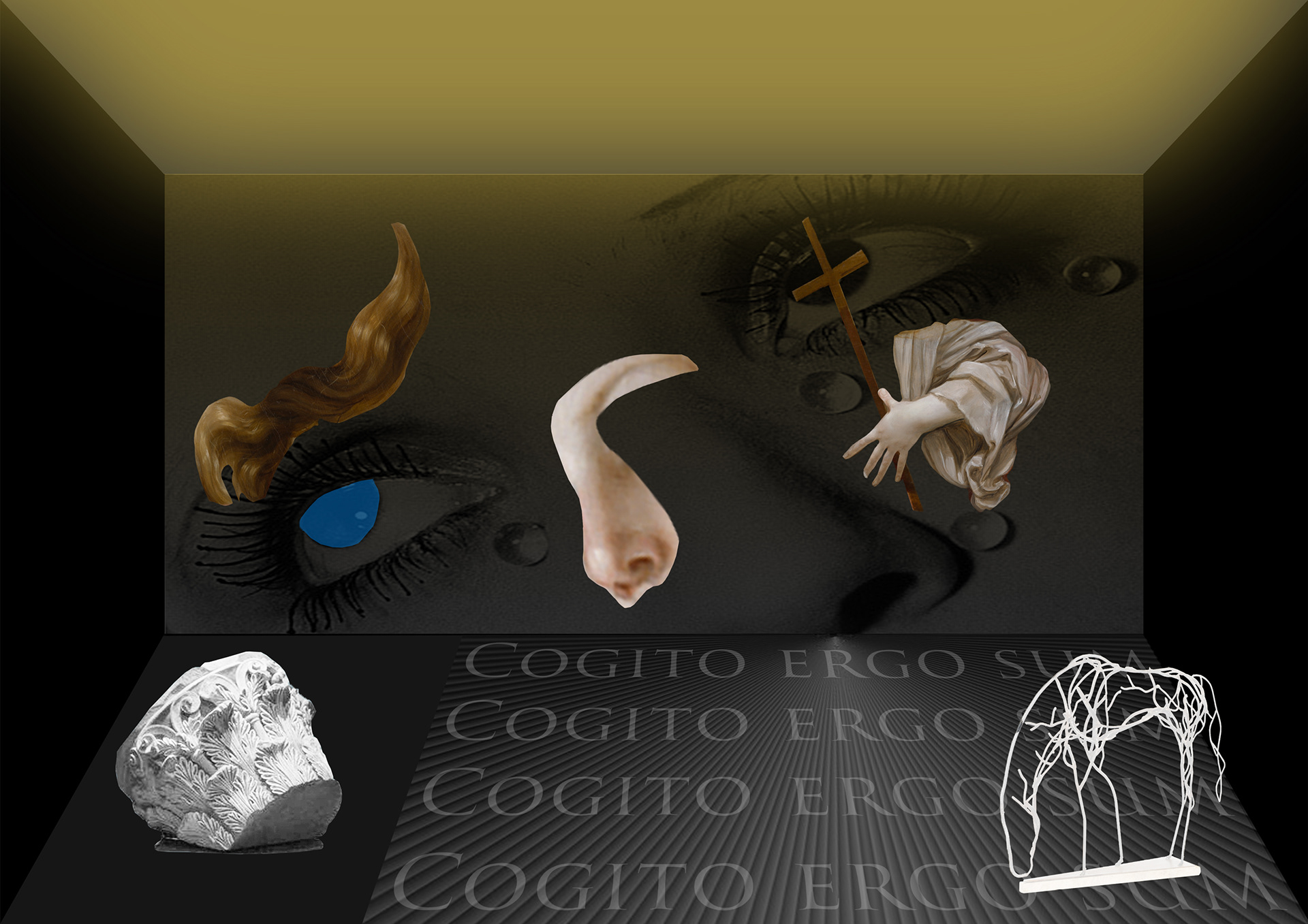
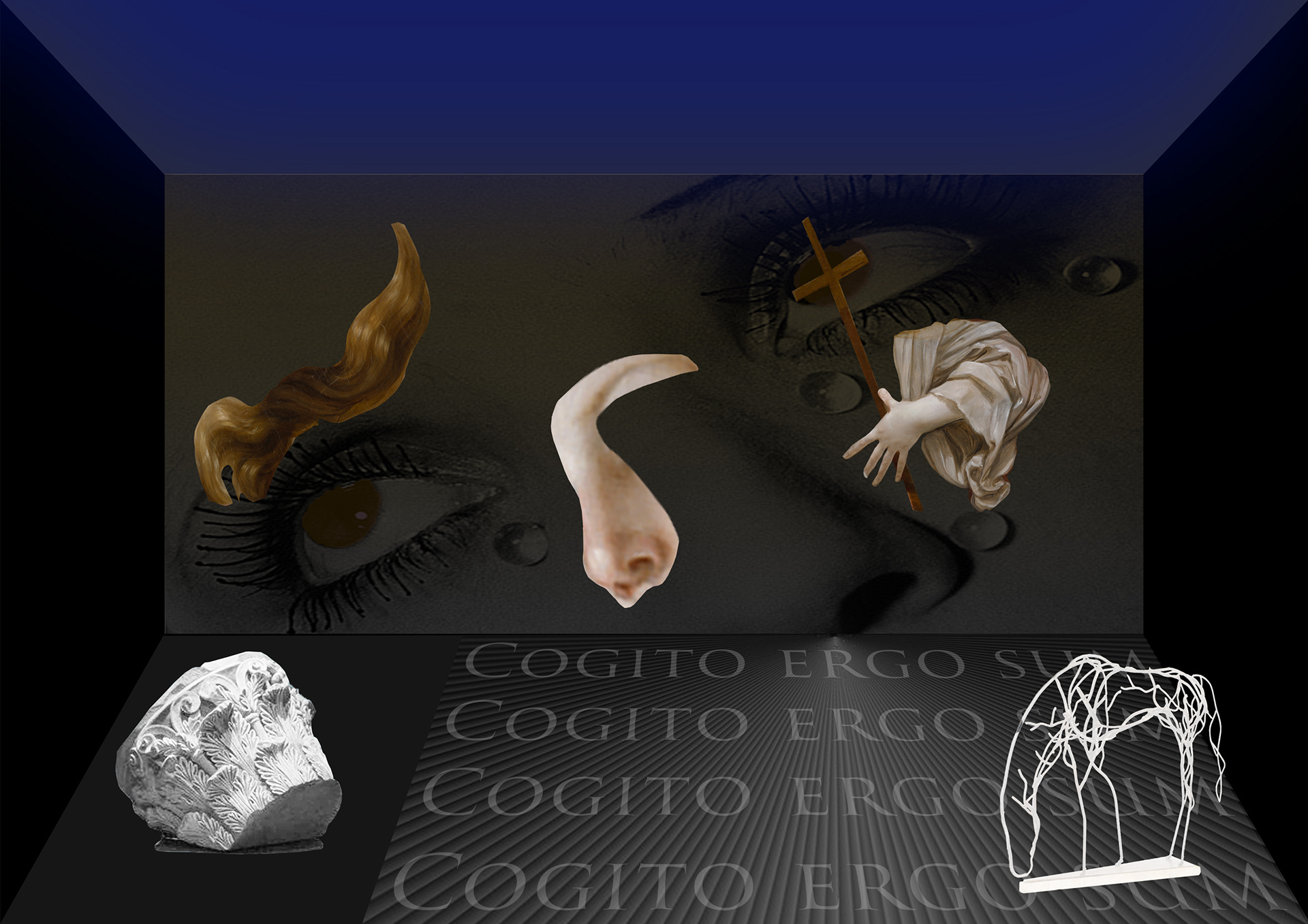
ACT 2 SCENE 1
Here, the changing horse comes into play, since now the position of the sculpture indicates Napoleon was not defeated, but rather triumphed, much in same manner as classical sculpture tells the tale of the rider through the horse. Scarpia's office and the prison are segmented through the moving staircase and the background is warped and dangerous, full of surrealist imagery that is almost dizzying. This complements the purple lighting, symbolising betrayal.
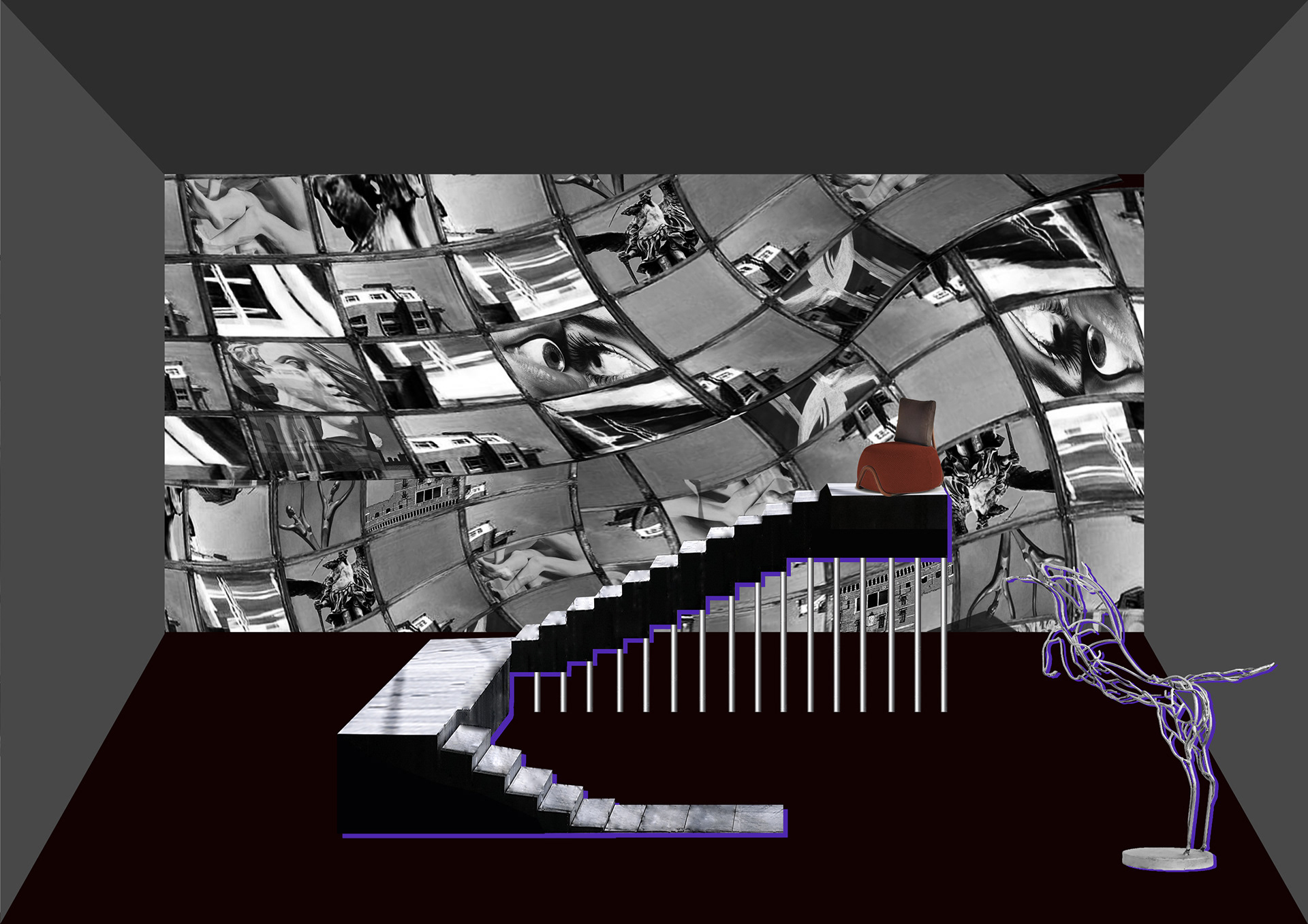
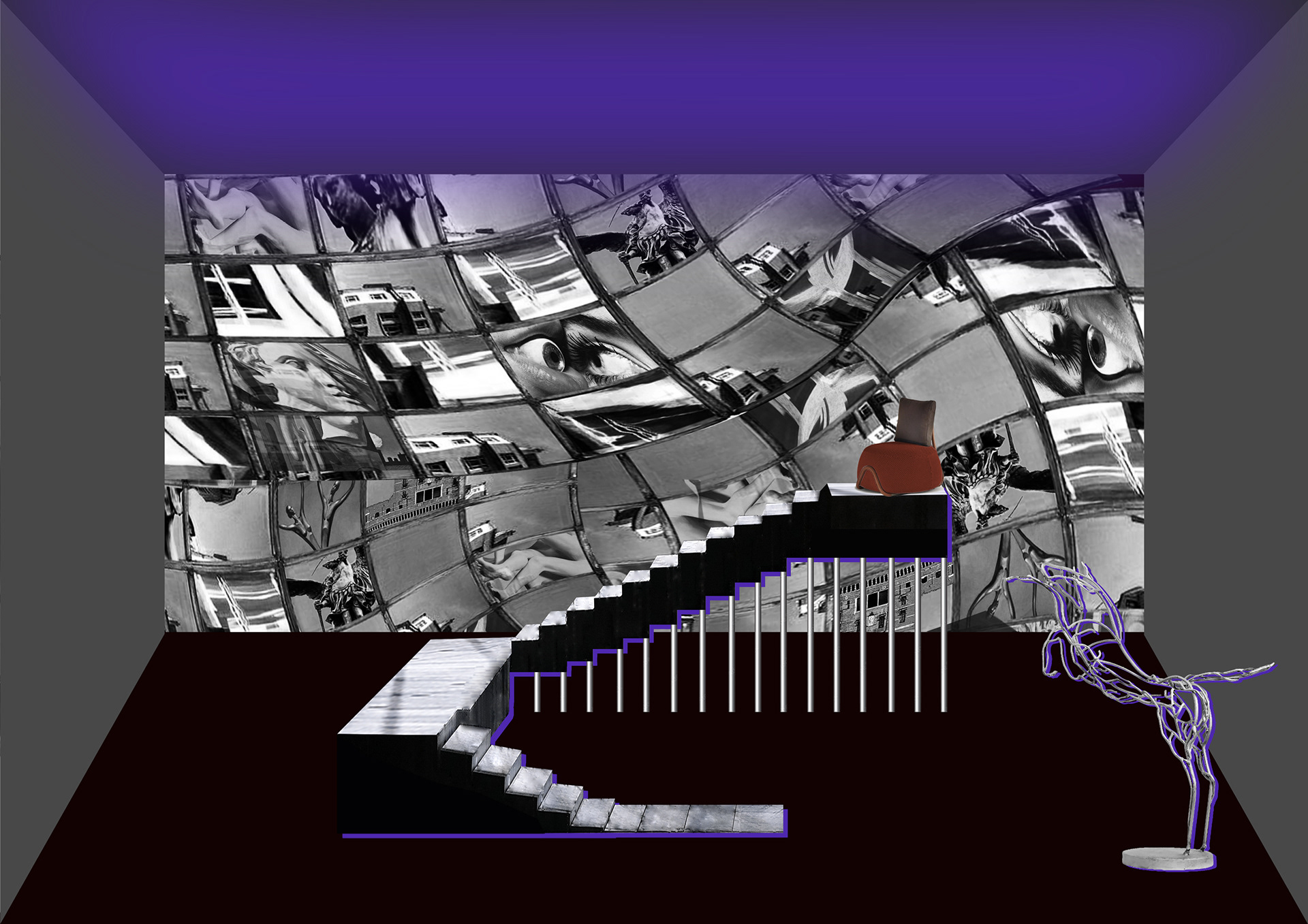
ACT 2 SCENE 2
This scene is the turning point of the opera, seen through the increased intensity in the light, and the dropping of the net to hide the murder of Scarpia from audience, but also from Tosca herself, who cannot come to terms with what she has done. Futhermore, in the moment the killing has happened, the floor shows a projection of red thorns, tying into the third act visually, but also forewarning the characters of the dangers to come.

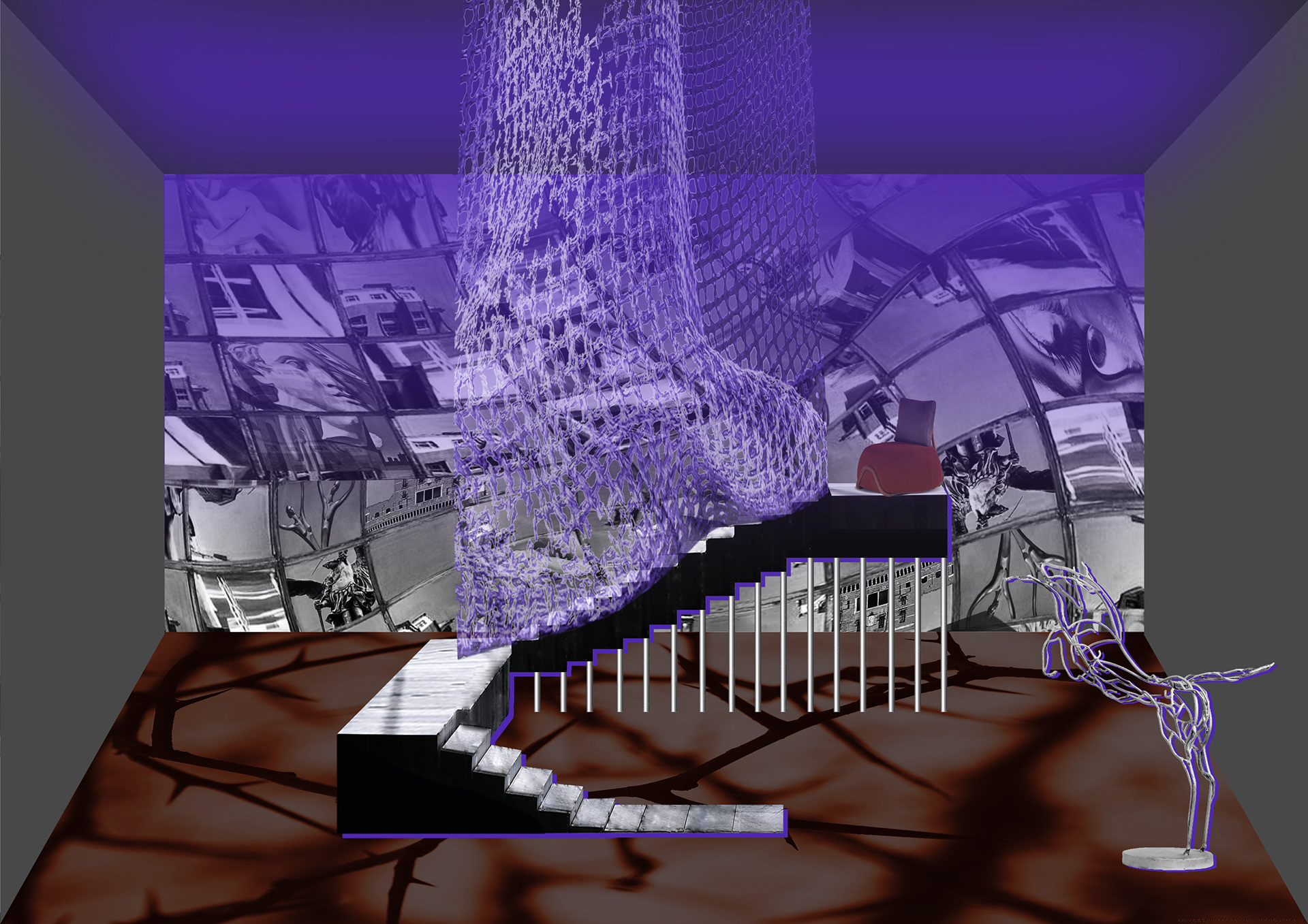
ACT 3 SCENE 1
Because of the lie present in the narrative, the clouds, spirals and the doorway focal point allude to a fantasy world and the surreal dream the characters are convincing themselves of before the bubble bursts. The deconstructed angel places us in the emblematic Castel Sant'Angelo in Rome. The presence of red depicts the presence of danger, along with the blood spatter on the floor after the execution fo Cavaradossi.
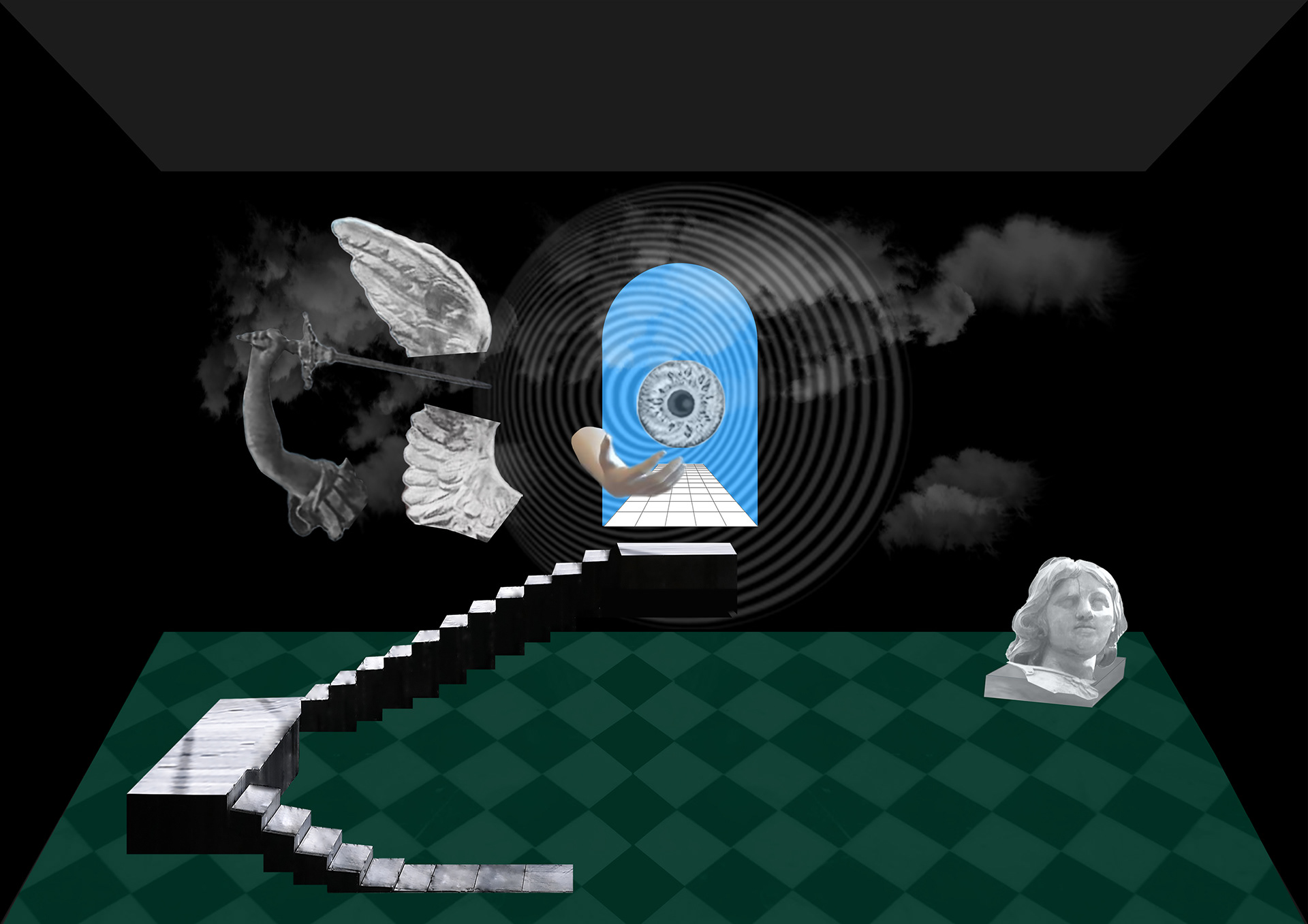
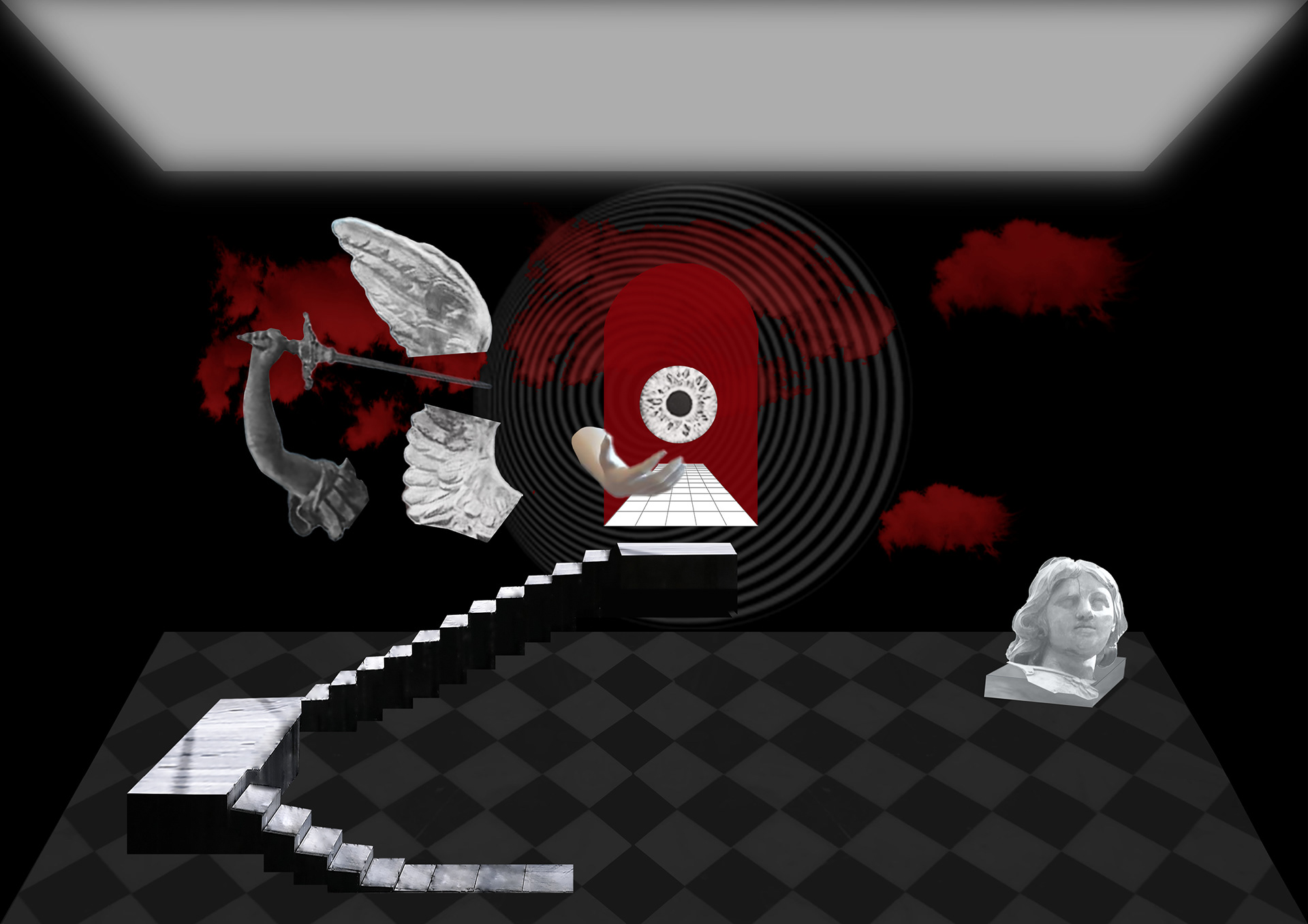
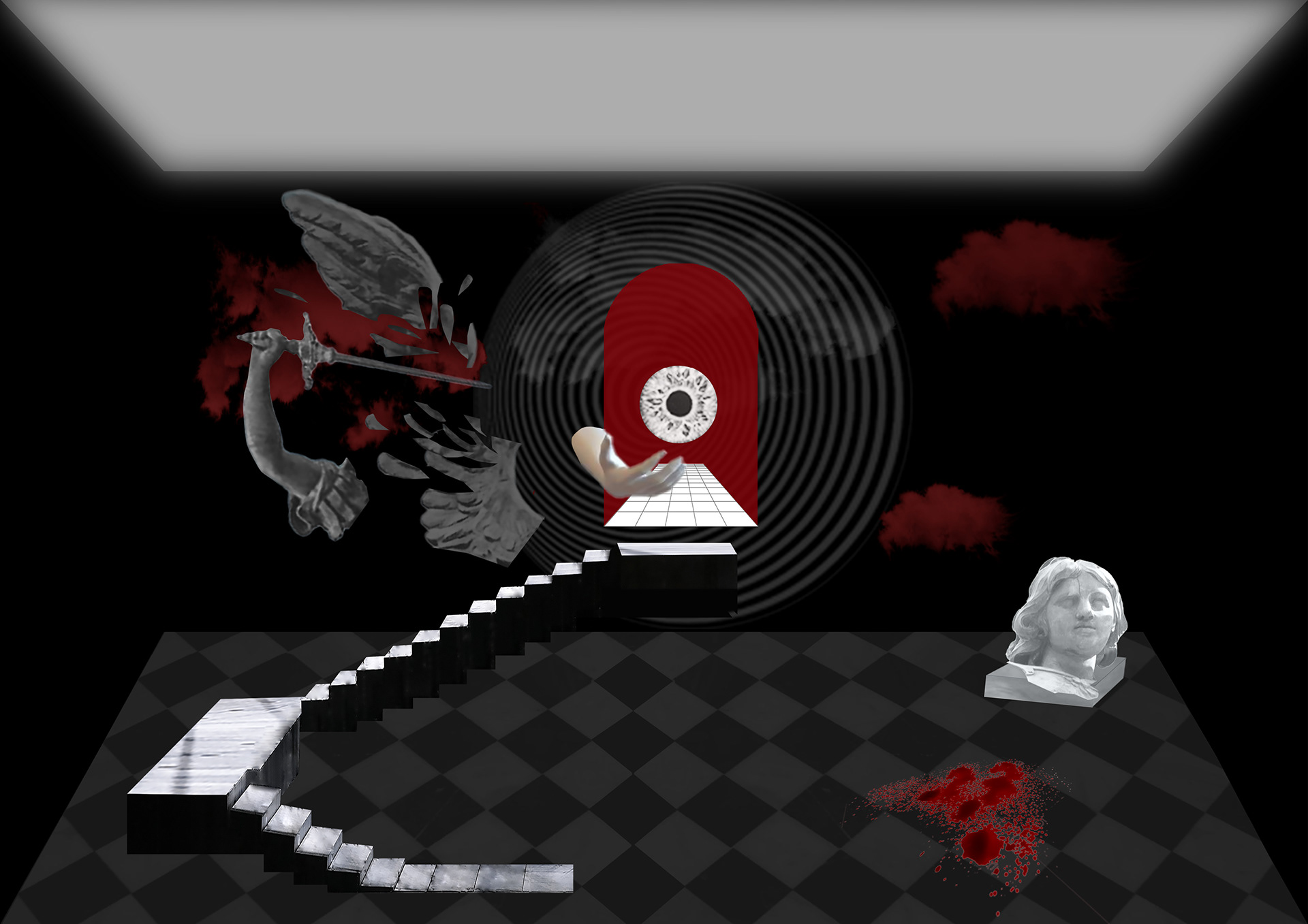
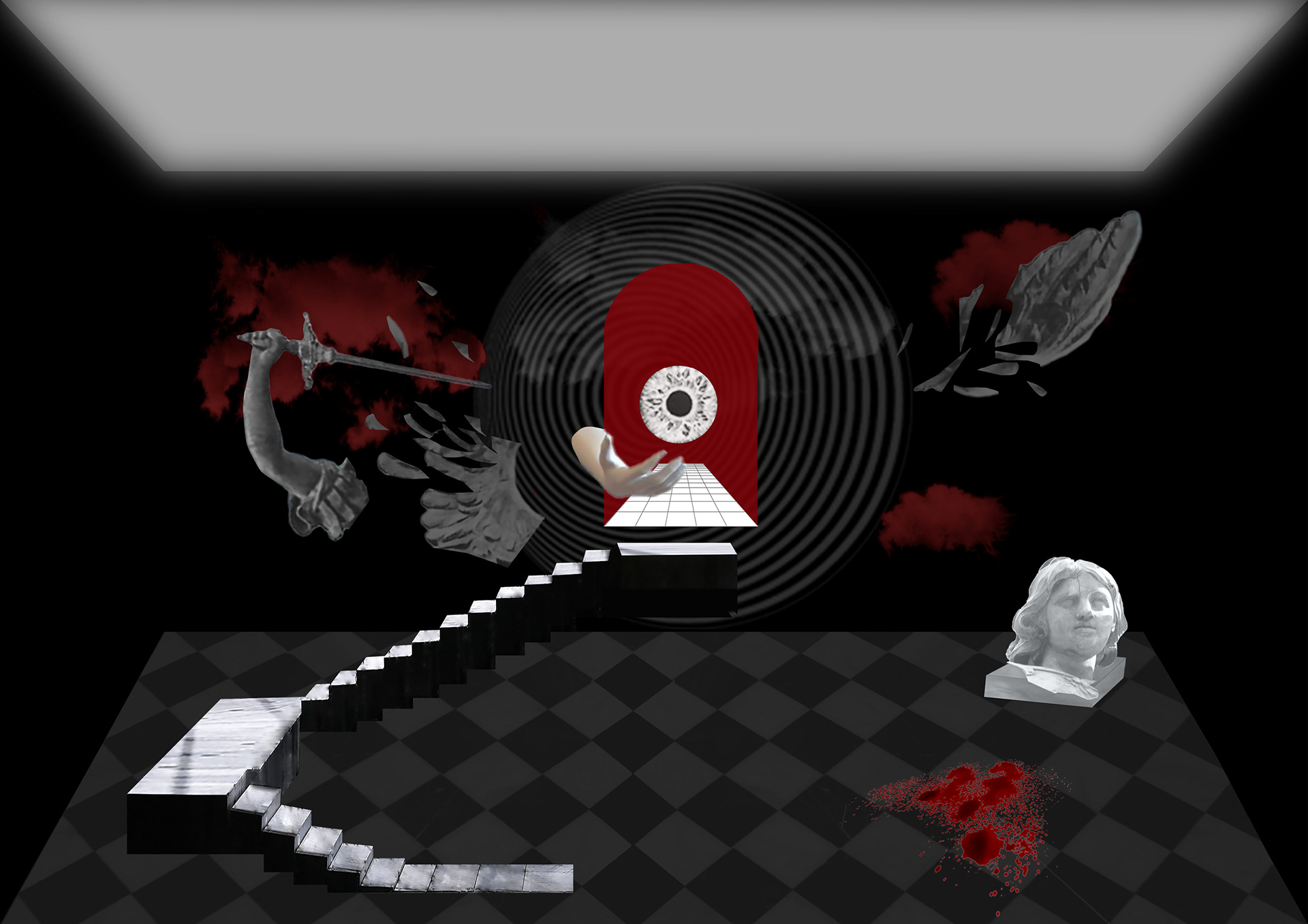
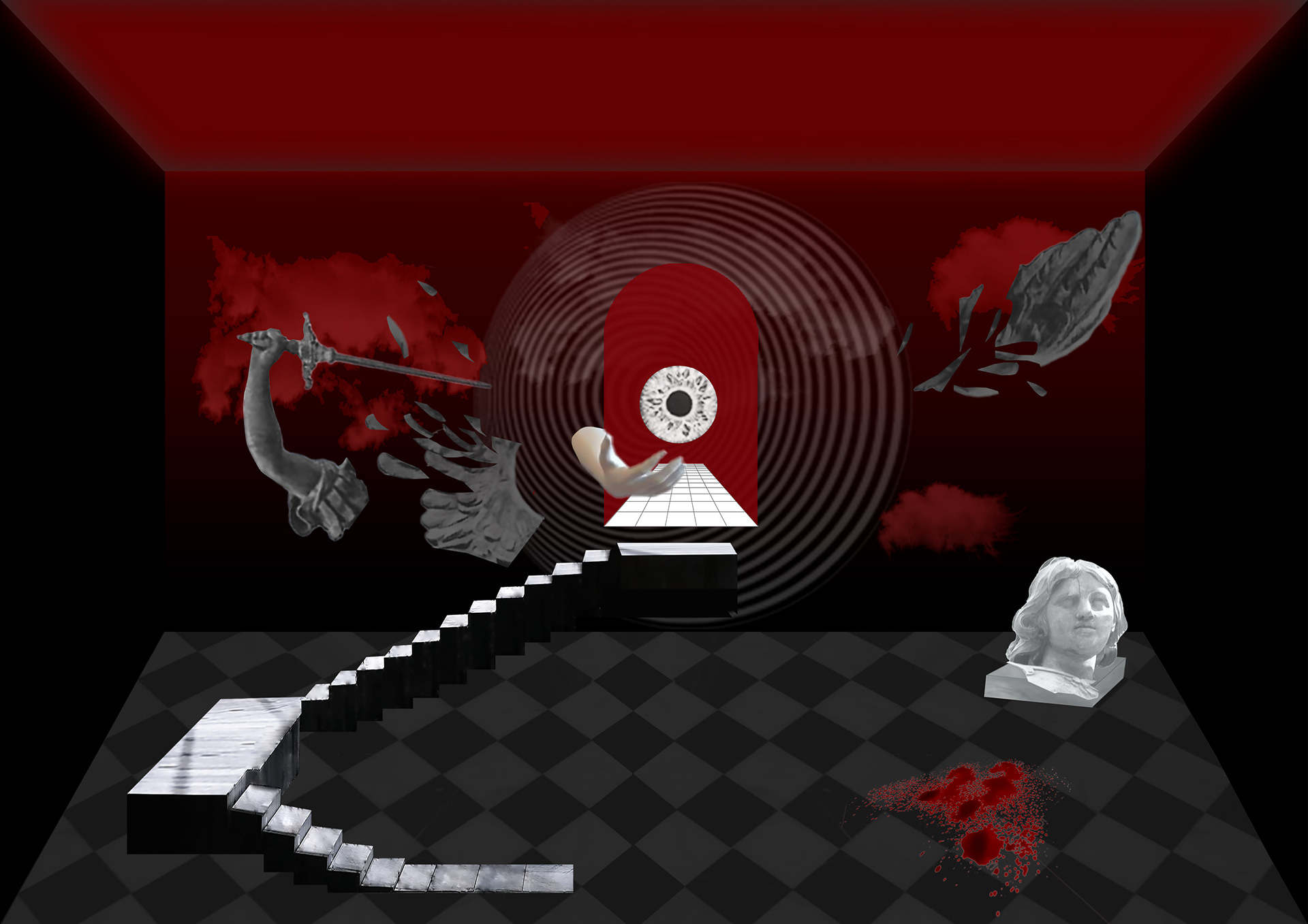
ACT 3 SCENE 2
The chaos present in all of the transitions in the background projections signify the confusion, uncertainty and emotional disruption present in the final act. The blood spatter expands as the death toll increases, finalising with Tosca herself committing suicide. When she dies, the fallacy of Tosca's brown eyes fades away, revealing the true blue nature of them.
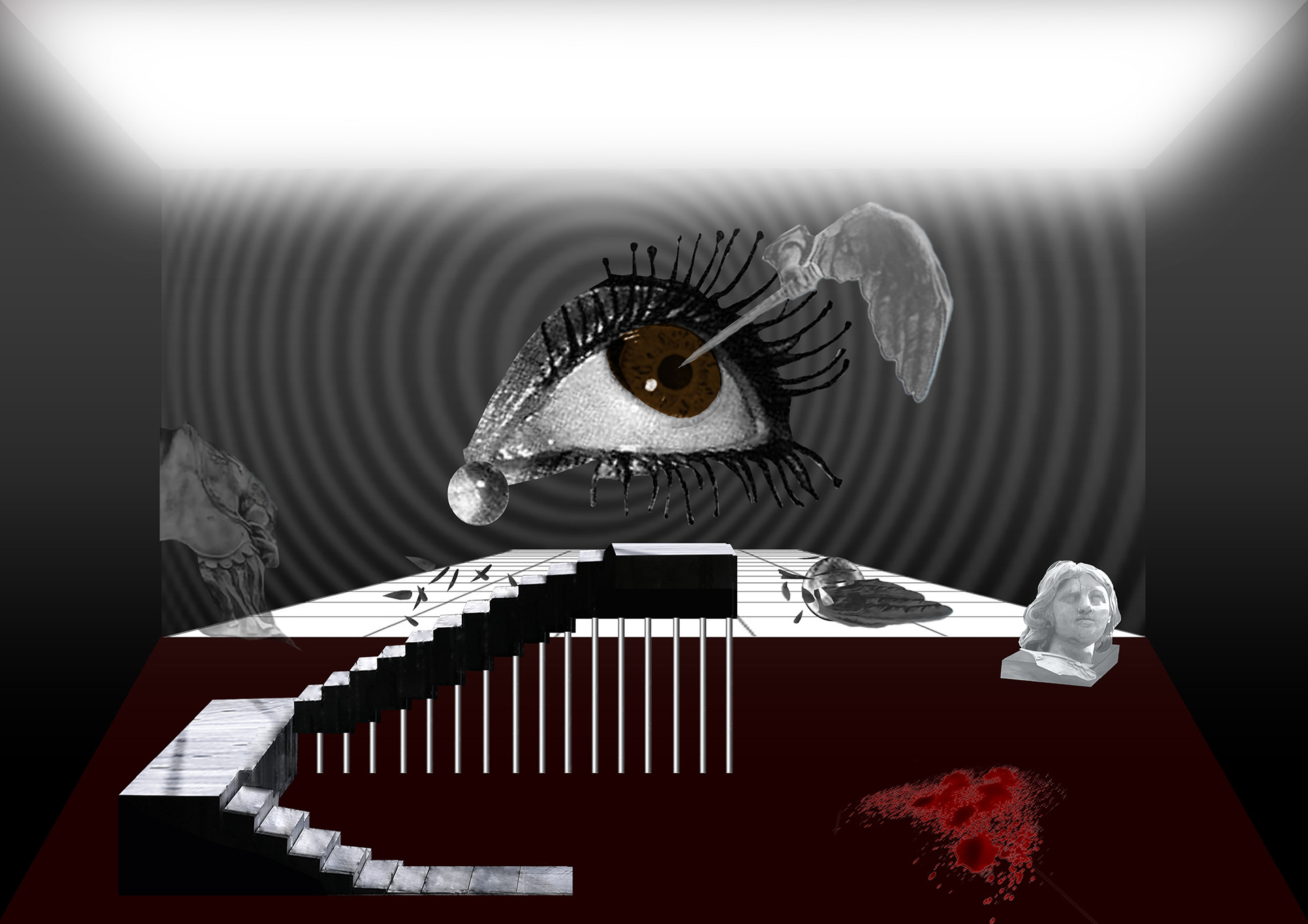
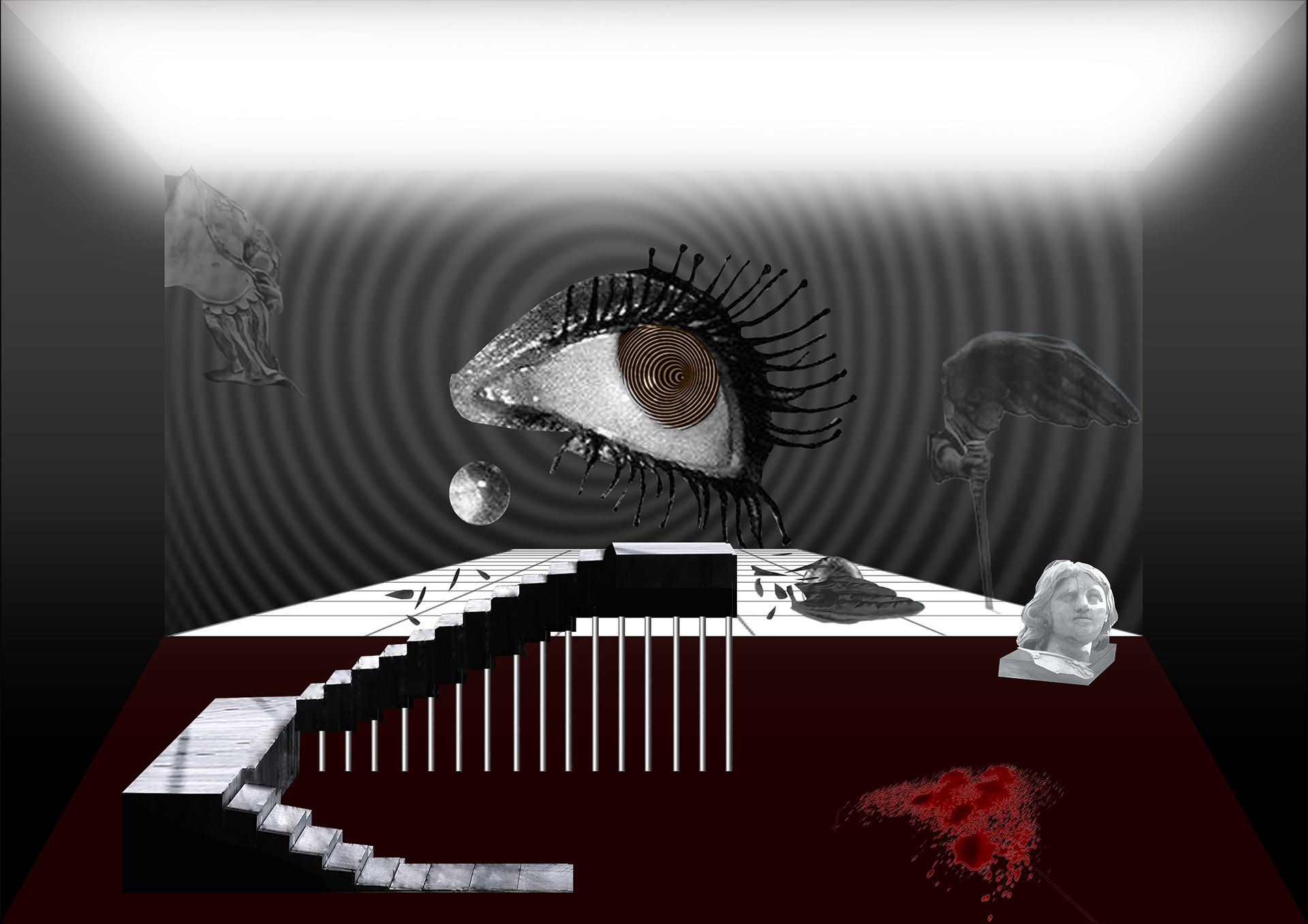
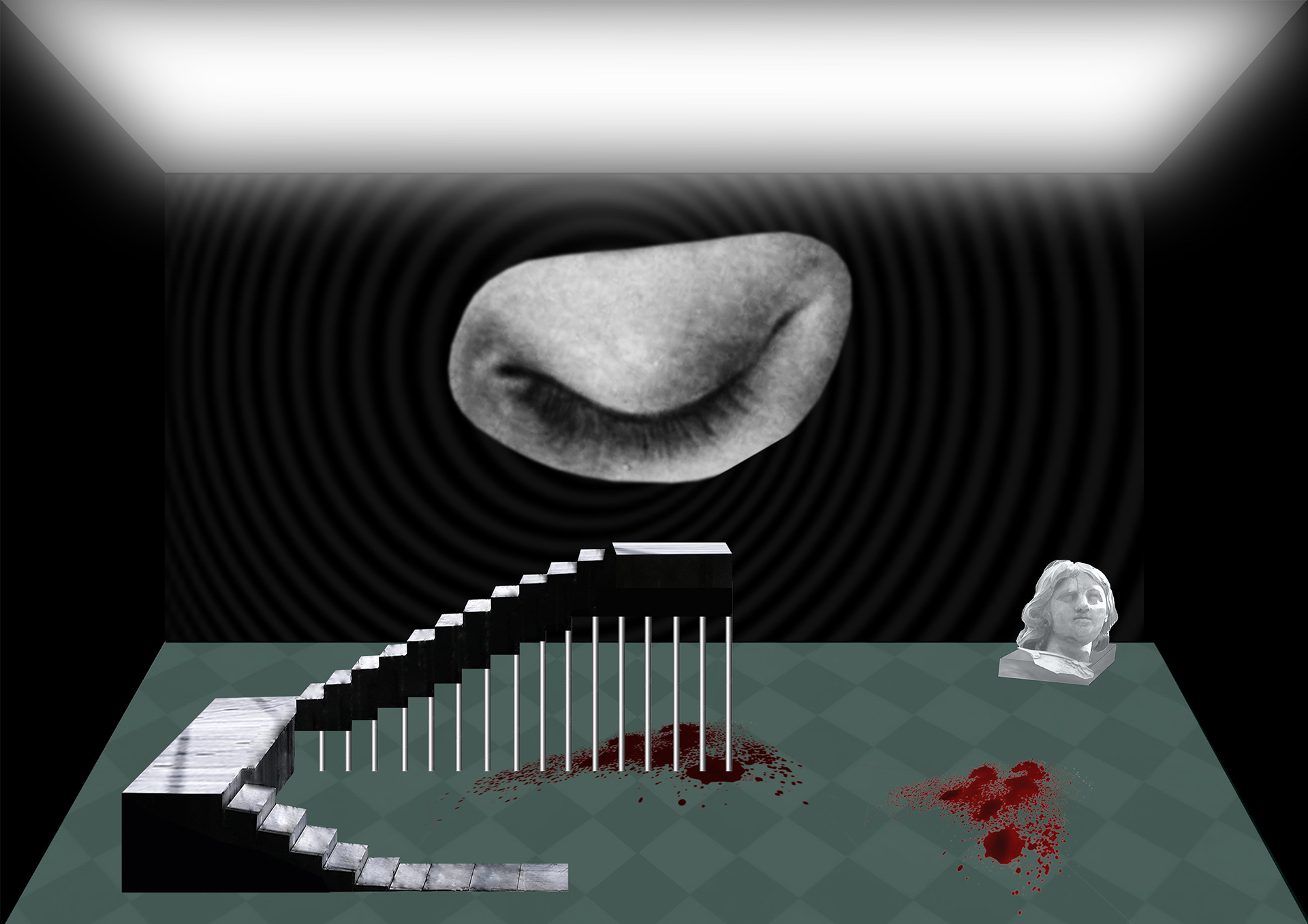
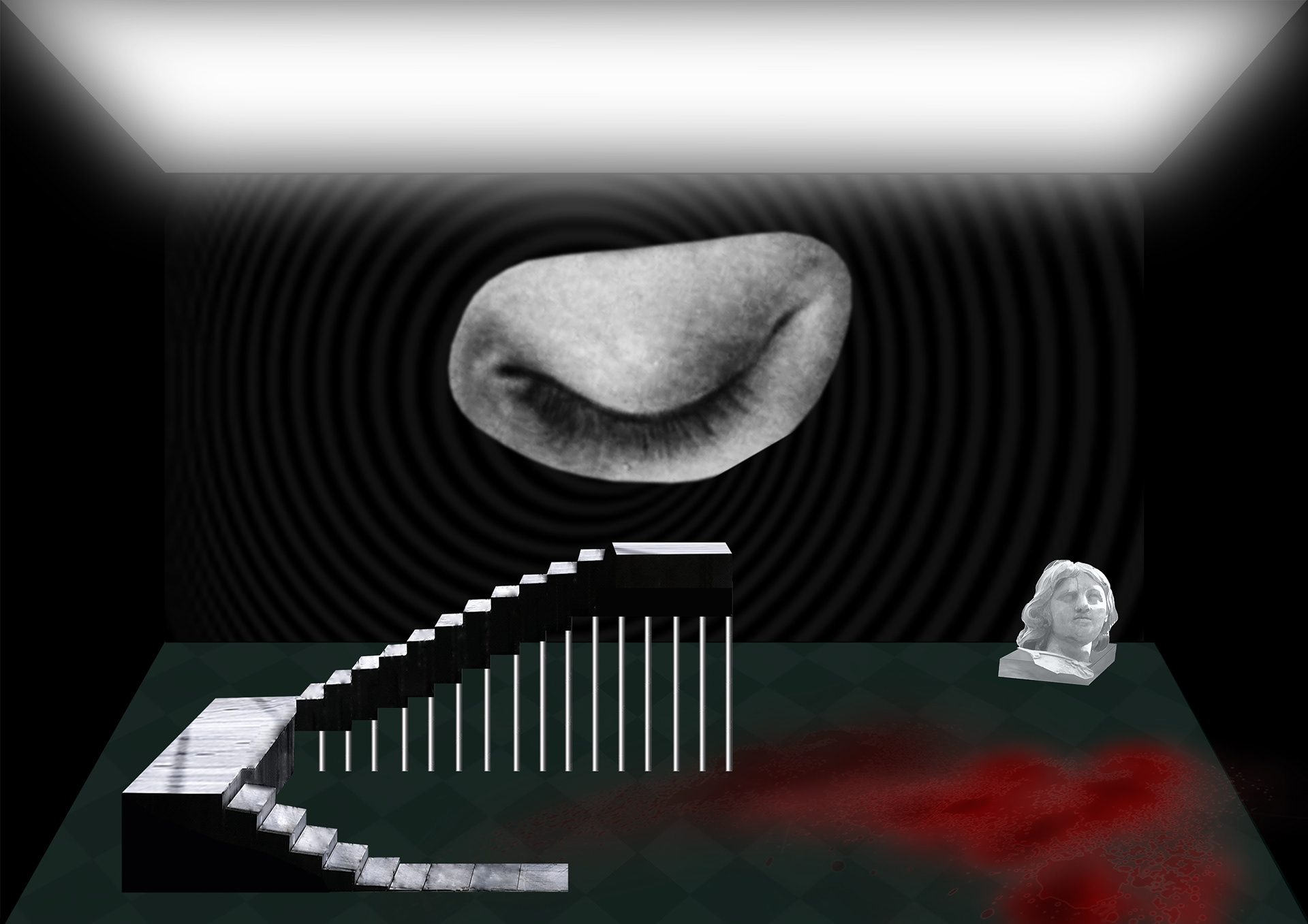
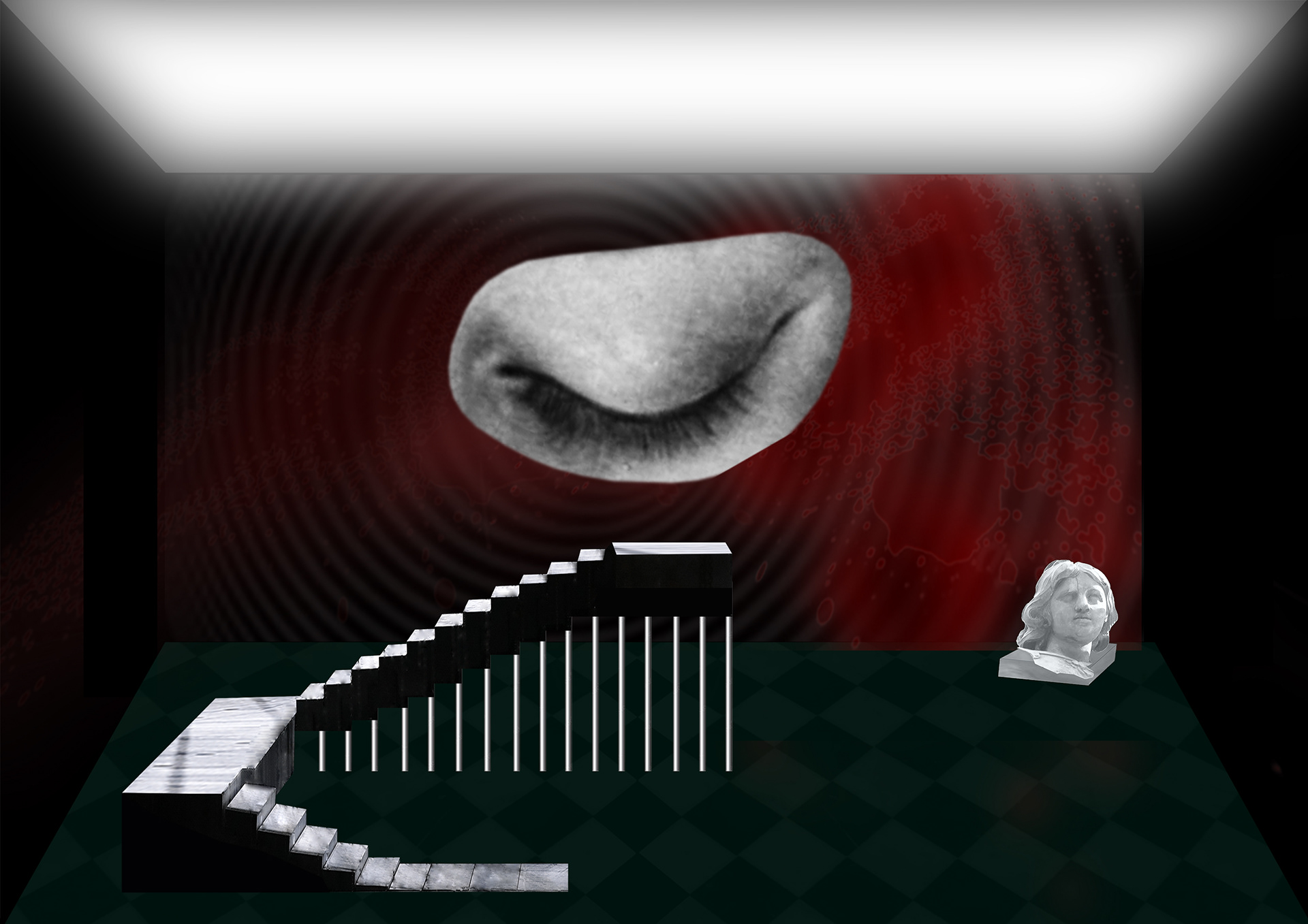
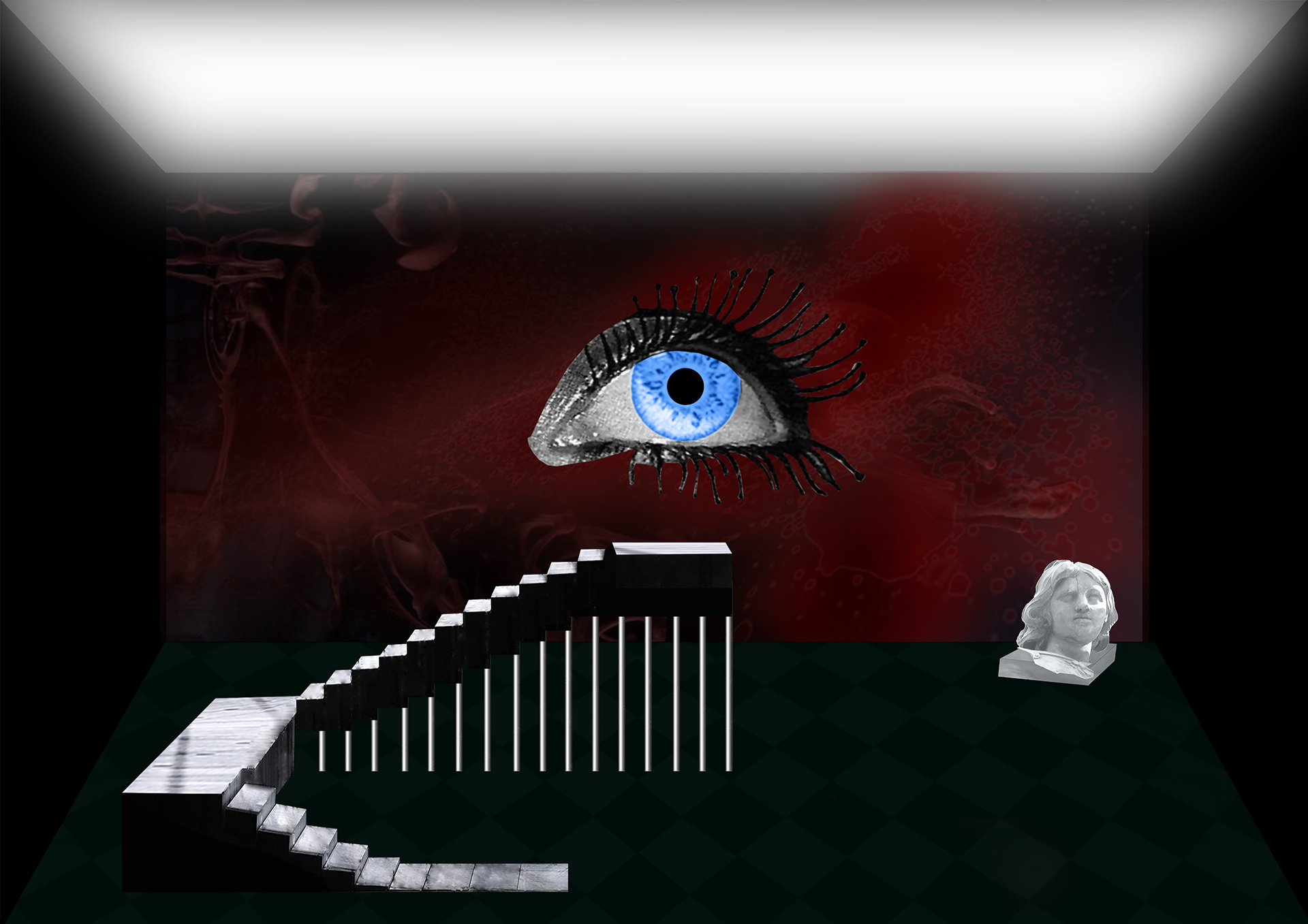
After concluding the technical stage design, a promotional poster was developed in order to spread the word on the opera's arrival to the Museum's theatre.


